1lumen selects and reviews products personally. We may earn affiliate commissions through our links, which help support our testing.
Trustfire T30R review

Trustfire T30R specifications
| Brand/model | Trustfire T30R |
|---|---|
| Flashlight category | LEP / long-range |
| LEP | Shine-through LEP |
| Max. output | 460 Lumens |
| Max. beam distance | 1,100 meters |
| Max. beam intensity | 302,500 cd |
| Battery config. | 1*18650 |
| Onboard charging | USB-C |
| Modes | 3 |
| Blinkies | Strobe |
| Waterproof | IPX8 |
| Review date | October 2023 |
Review intro:
This is one of the flashlights that I bought based on a question I got. The question sounded like the LEP flashlight comparison video I made, was not enough, because it didn’t include the latest LEP flashlight, namely the Trustfire T30R.
Well, this flashlight isn’t new either, and even the specs aren’t very convincing.
So why did I buy this?
Well, for one, it was on sale, and secondly, I probably enjoy proving people wrong :–) lol
I’m excited to see what the T30R has in store, and I hope you are too. But I don’t have high hopes…
Package quality.
The package Trustfire used for sending the T30R isn’t bad, but simple. However, what I liked was the content of it:
- Trustfire T30R
- 18650 3,000 mAh battery
- Remote switch
- USB-C charging cable
- Lanyard
- O-rings
- Split ring
- Cleaning cloth
- Manual
- A very nice and soft pouch to carry it in
I was pleasantly surprised by the number of accessories and quality of the flashlight, for the price I paid.
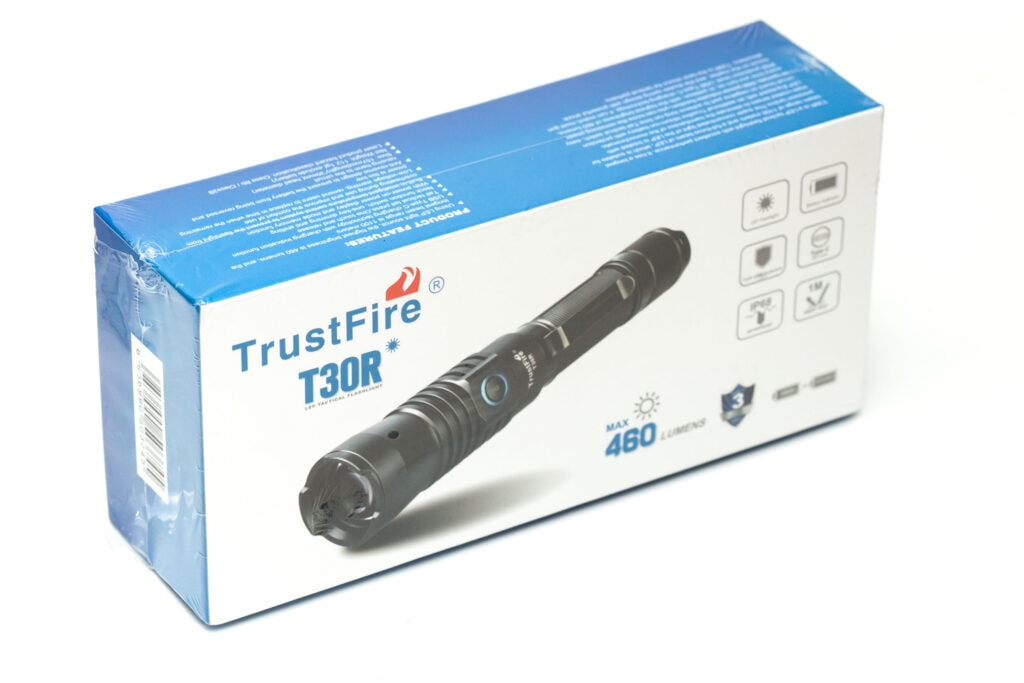
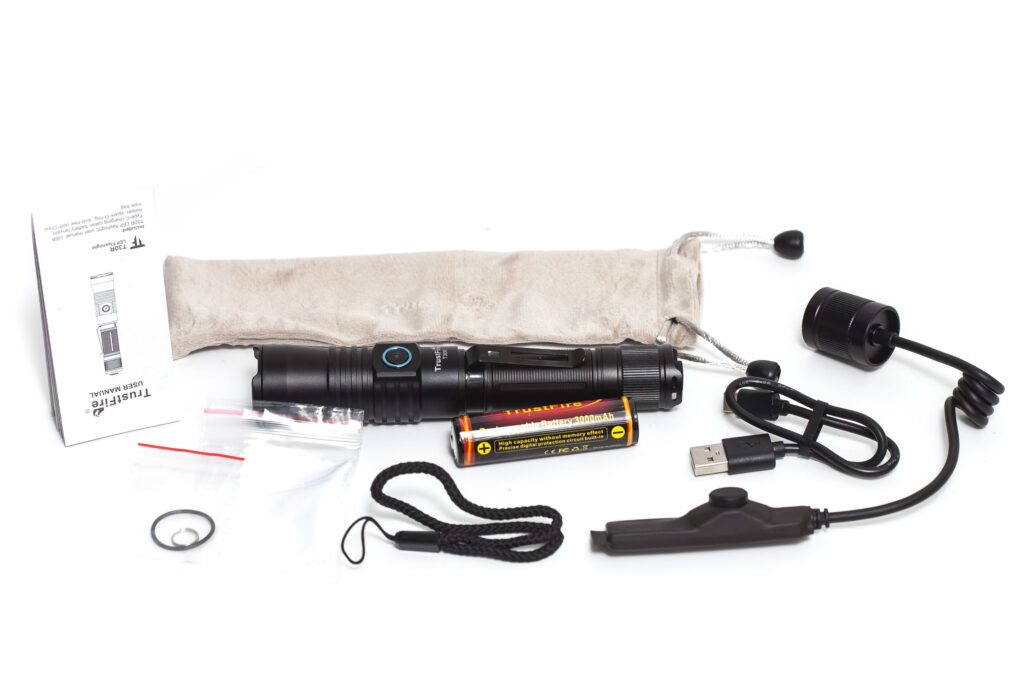
Flashlight in use
Compared to other LEP flashlights, it does feel like a bit thin and long. Especially if you put it next to 21700 or 26650 lights. And single cell 18650 LED flashlights are usually a bit shorter feels like.
The T30R has a dual switch setup, with 1 mechanical forward-clicky switch in the rear, and an electronic switch on the side. And this is kind of what I used to like on dual-switch designs, because the mechanical rear switch ensures the light from draining its battery in standby mode. Because if it only had an e-switch, there will always be a small current flowing, and discharging the battery. Fortunately though, in most cases these draws are tiny, but not always.
In the overhand position, you could use only 1 hand to operate the light. And in the normal (underhand) position, you either have to replace hand position or use your other hand to turn the switch on/off.
The rear switch is only used for power, while the side switch is used to change modes. And the switch is slightly protruding making it too unstable to tailstand.
Even though I really like the soft pouch Trustfire included in its packaging, it doesn’t make much sense for carrying. Except, if you want to keep it in pristine condition, and not get any wear on the coating.
Regarding carrying, I guess the pre-attached pocket clip could be used, or the included lanyard. The pocket clip increases grip, but also ensures the light not rolling of the table. However, the clip attaches to the body around mid-way, with the clip reaching towards the tailcap. This makes the flashlight unstable when attached to anything, because the head is bigger and make it feel out of balance.
And being an LEP flashlight, I can see this light used for long-distance search, or as a beacon to be seen from far.
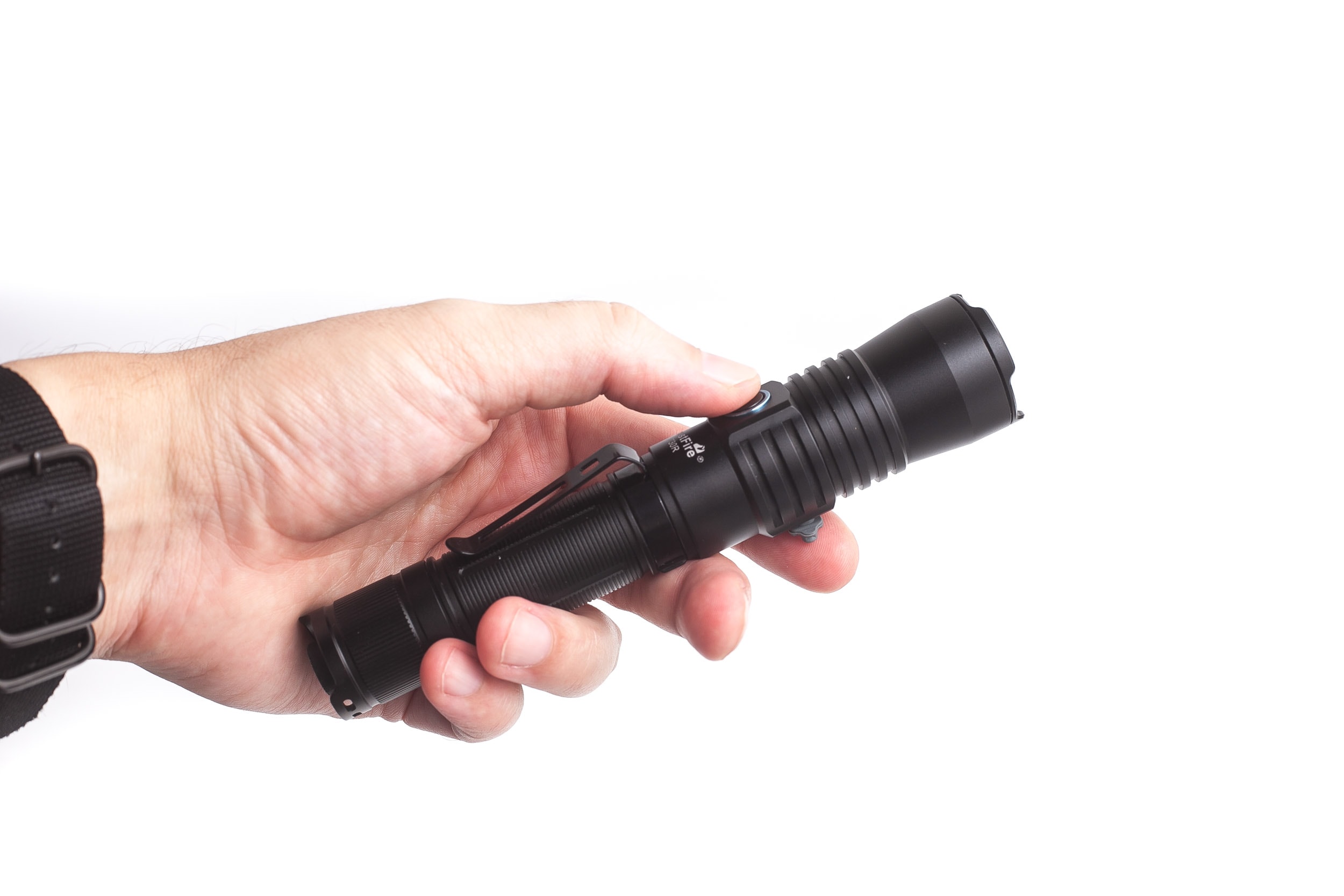
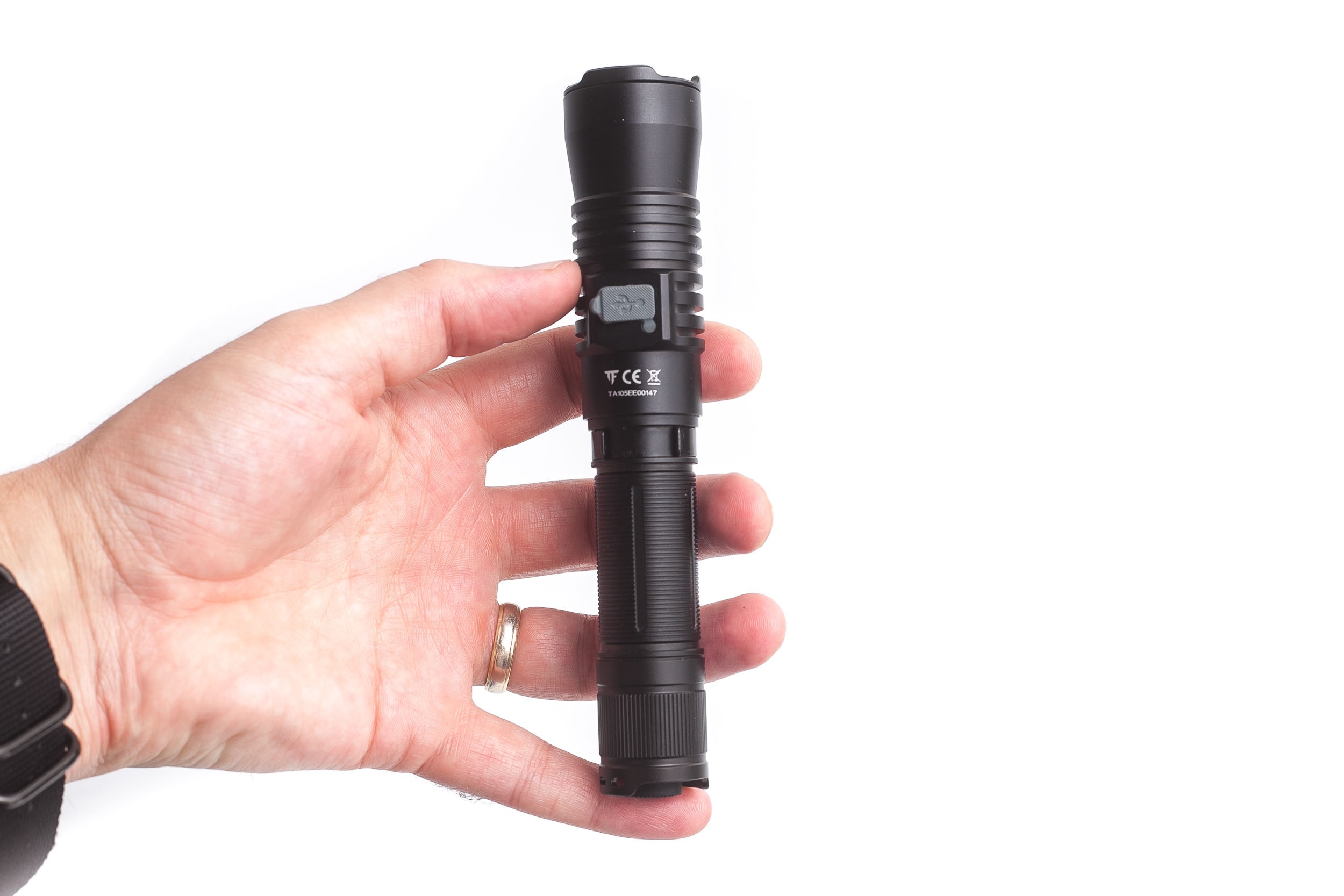
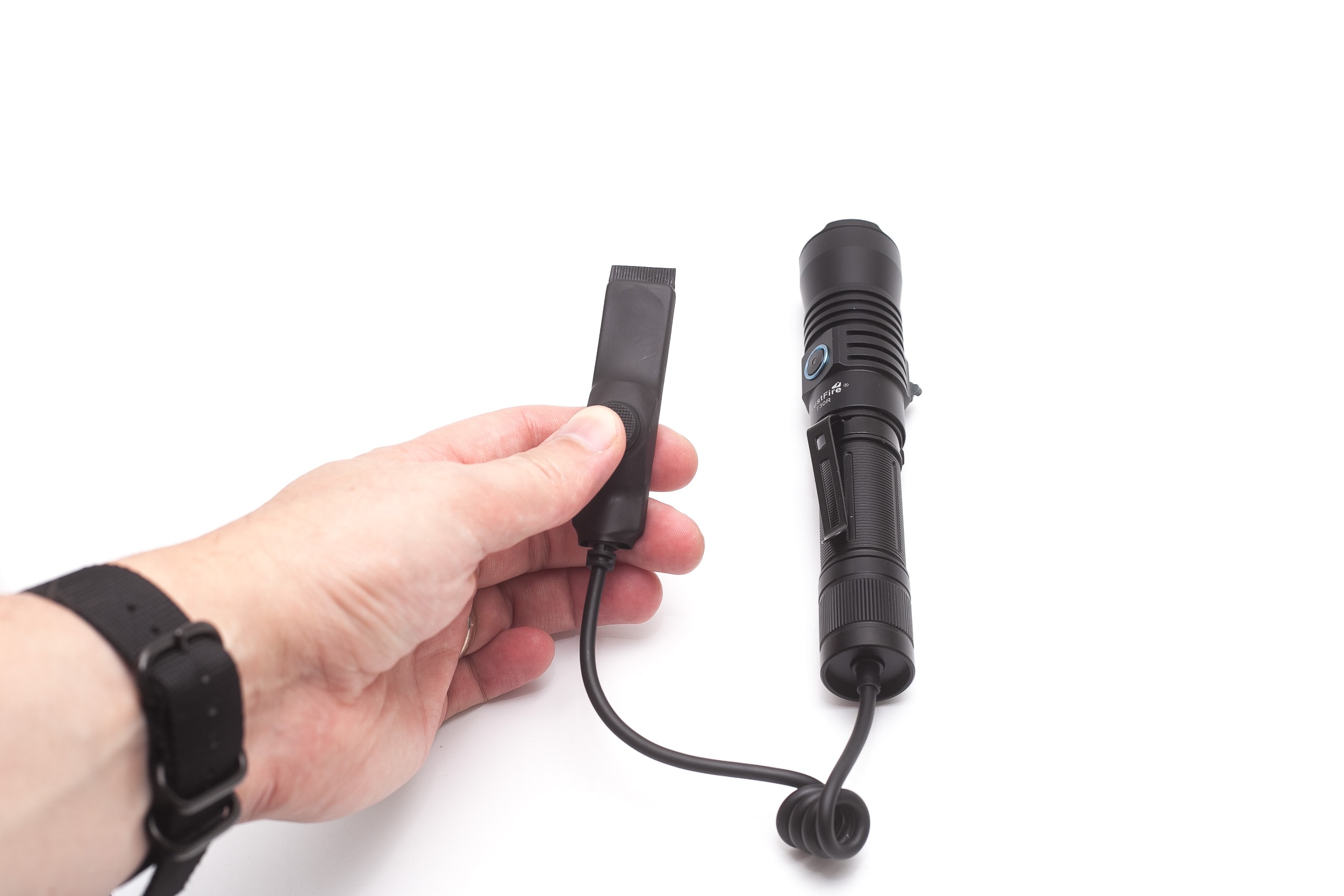
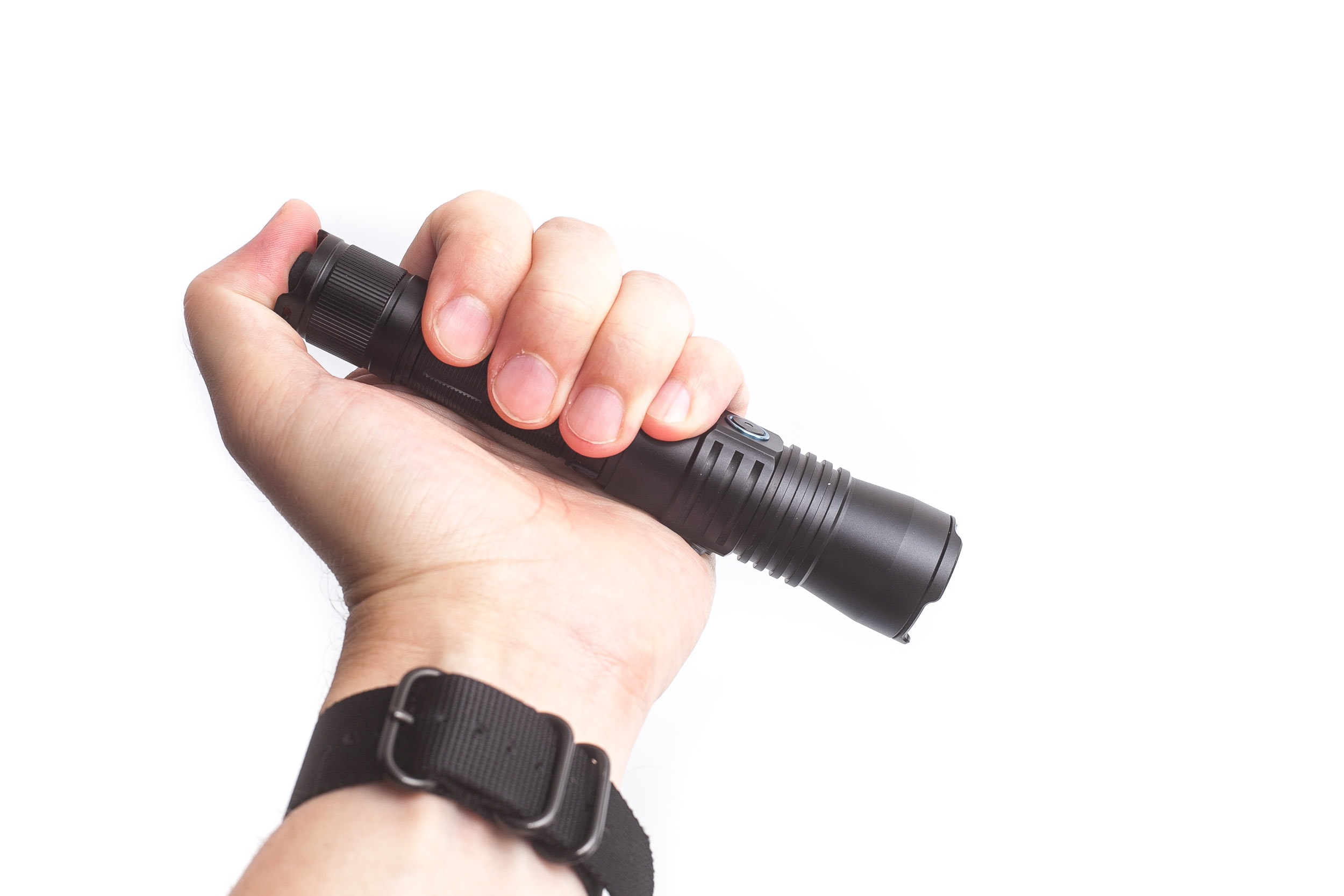
Build Quality and Warranty
Trustfire has a long history in the flashlight industry, but their reputation has often been associated with lower-quality flashlights. Nevertheless, I’m glad to say that the build quality of this T30R is on par with Fenix, Acebeam or any other main flashlight brand. So that’s another pro.
Moreover, the black anodization looks great, without any damage or color differences, and has a premium looking matte finish.
Once the tailcap is removed, you’ll notice non-anodized threads with a good amount of lubrication. Likewise, the single o-ring has plenty of lubrication to protect from water penetration.
The threads don’t feel too smooth when (un)screwing.
Warranty:
I’m not completely sure how trustworthy Trustfire’s warranty is, but this is what it says:
| Warranty Period | Product Name |
|---|---|
| 3-Year Warranty | All flashlights |
| 1-Year Warranty | lithium battery |
| No Warranty | Non-rechargeable batteries、Clip、(Head-light) Headband、Holster |
30-day Returns
Orders can be returned for any reason within 30 days from the date the order was received. Returned items must be in the same new condition, unworn and in the original packaging. Once you apply for a refund or replacement, we will send you a return label to return the item to us, no need to pay for the shipping cost. Free or promotional items must be returned along with the original item when being fully refunded.
Once your return is received, a refund or replacement will be processed, and a credit will automatically be applied to your original payment method. Please note that it might take 2-5 business days for a refund to show up on any bank statements.
For items purchased from third-party platforms within 30 days, we recommend you contact the original seller first, so they can better assist you. If you have any issues with them, please contact us.
Within Limited Warranty
Please contact our customer service at [email protected]. We may need your serial number, the date of purchase, and a simple description about your issue. If your item needs to be returned for repair or replacement, we will provide you a warranty application number(after-sales number) and the form to return the defective light together. You will need to cover the shipping cost, no need to pay for the repair fee.

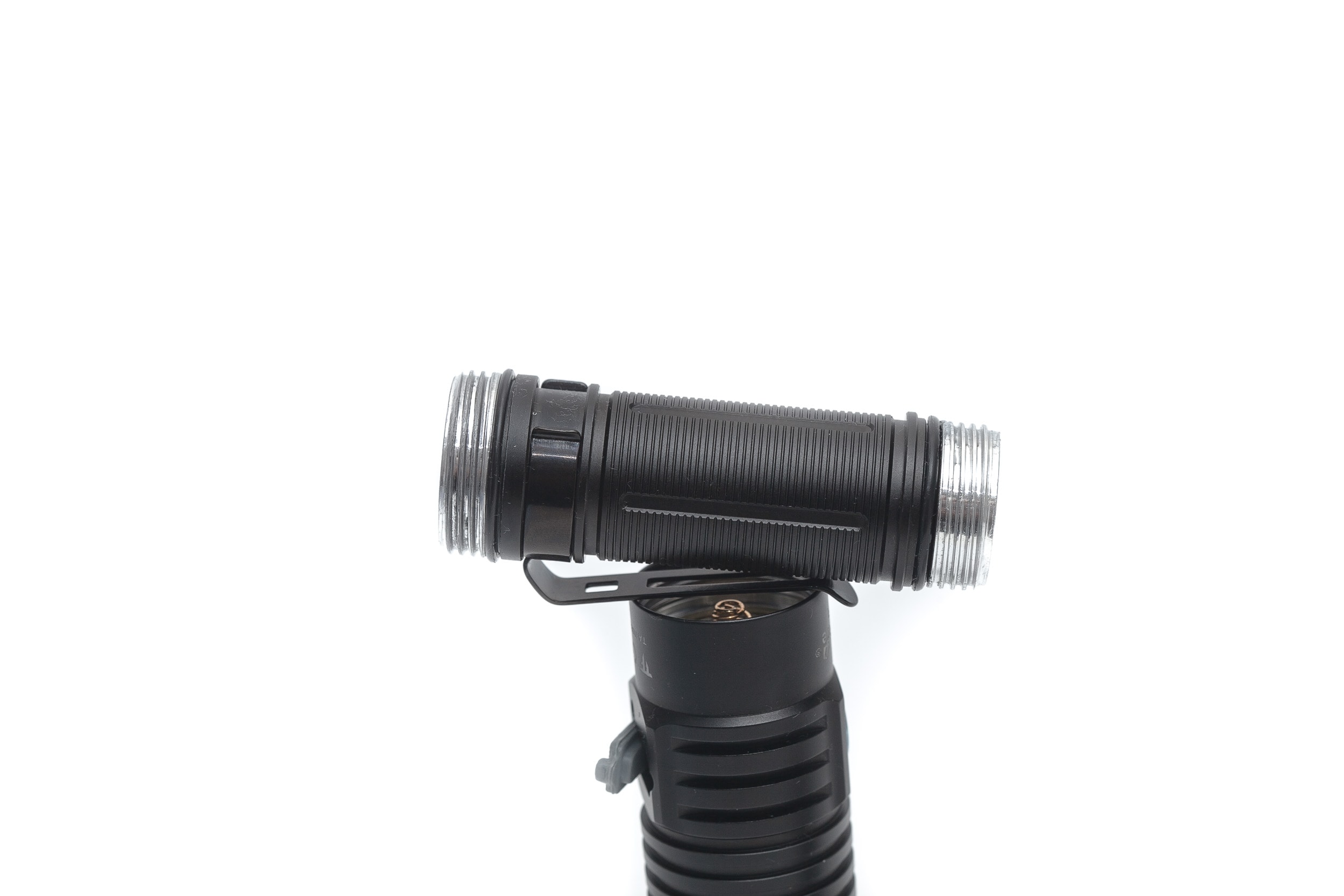
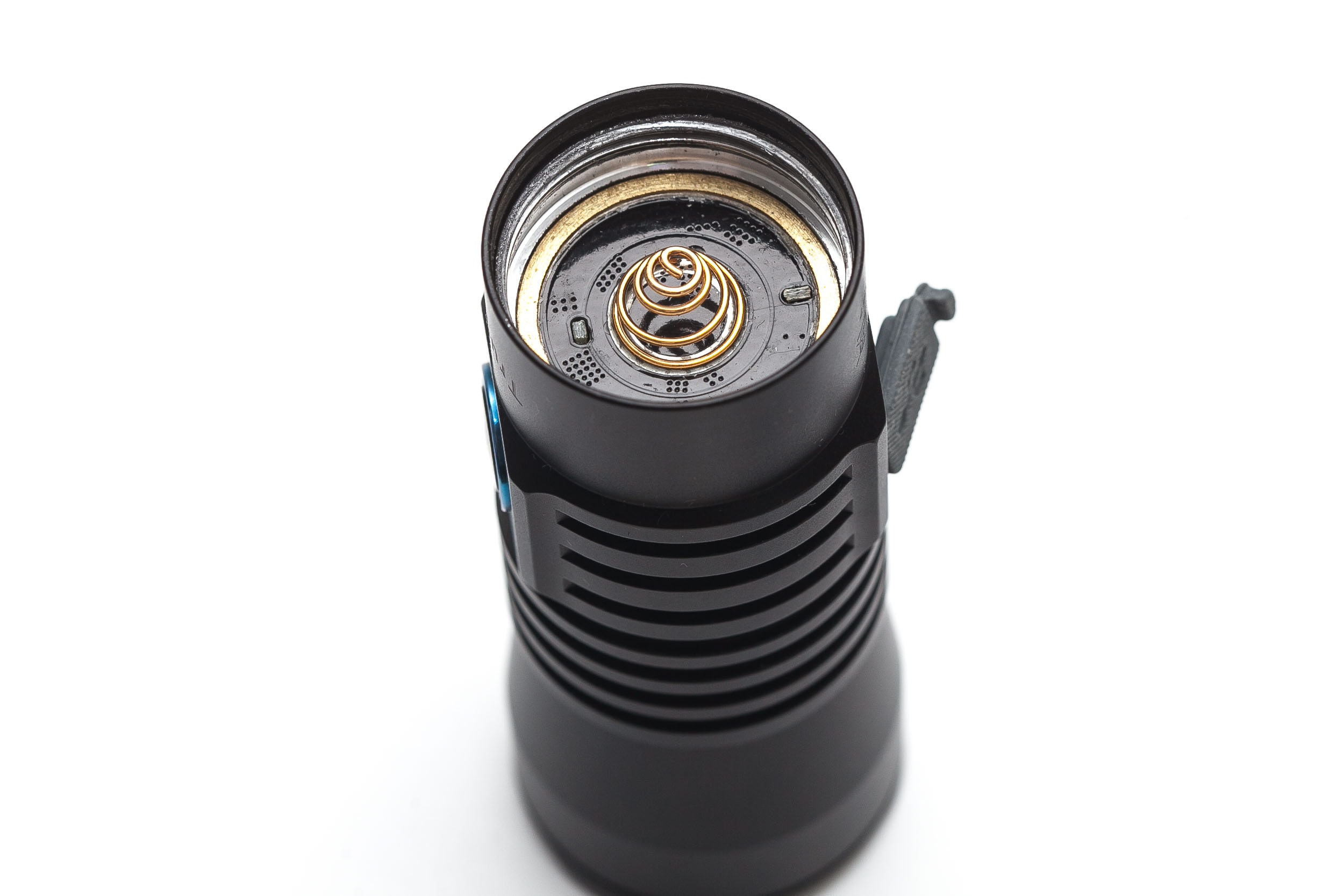
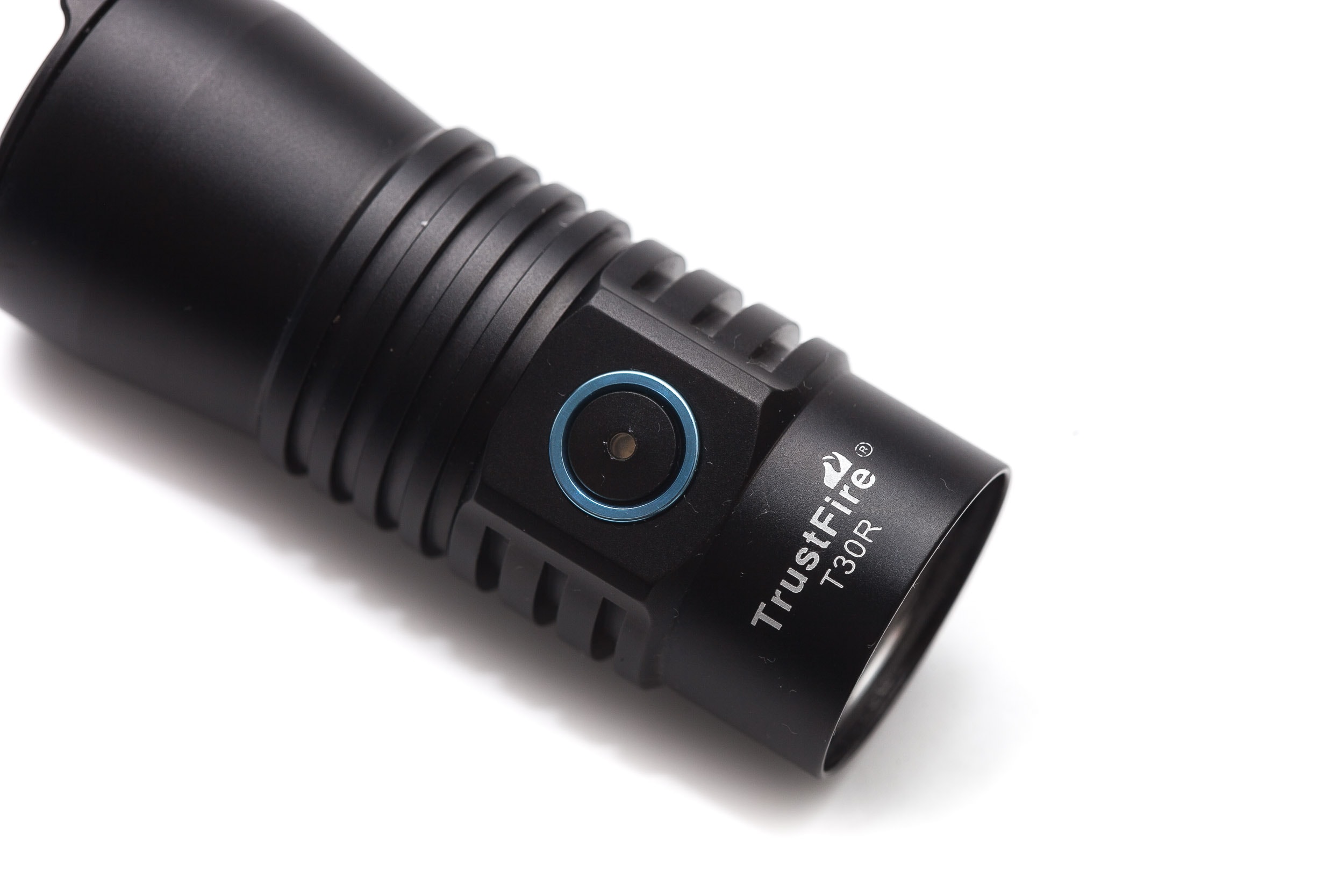
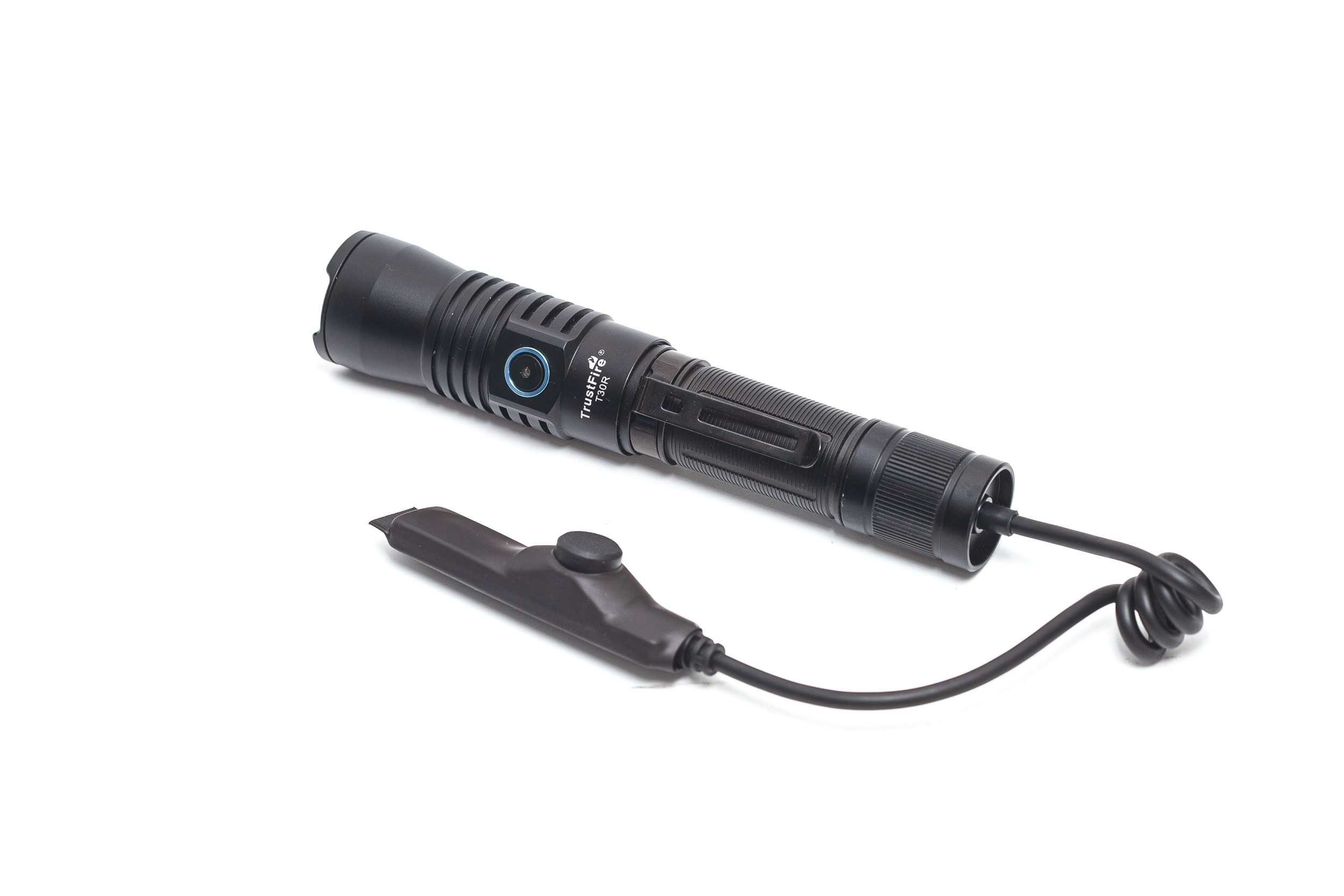
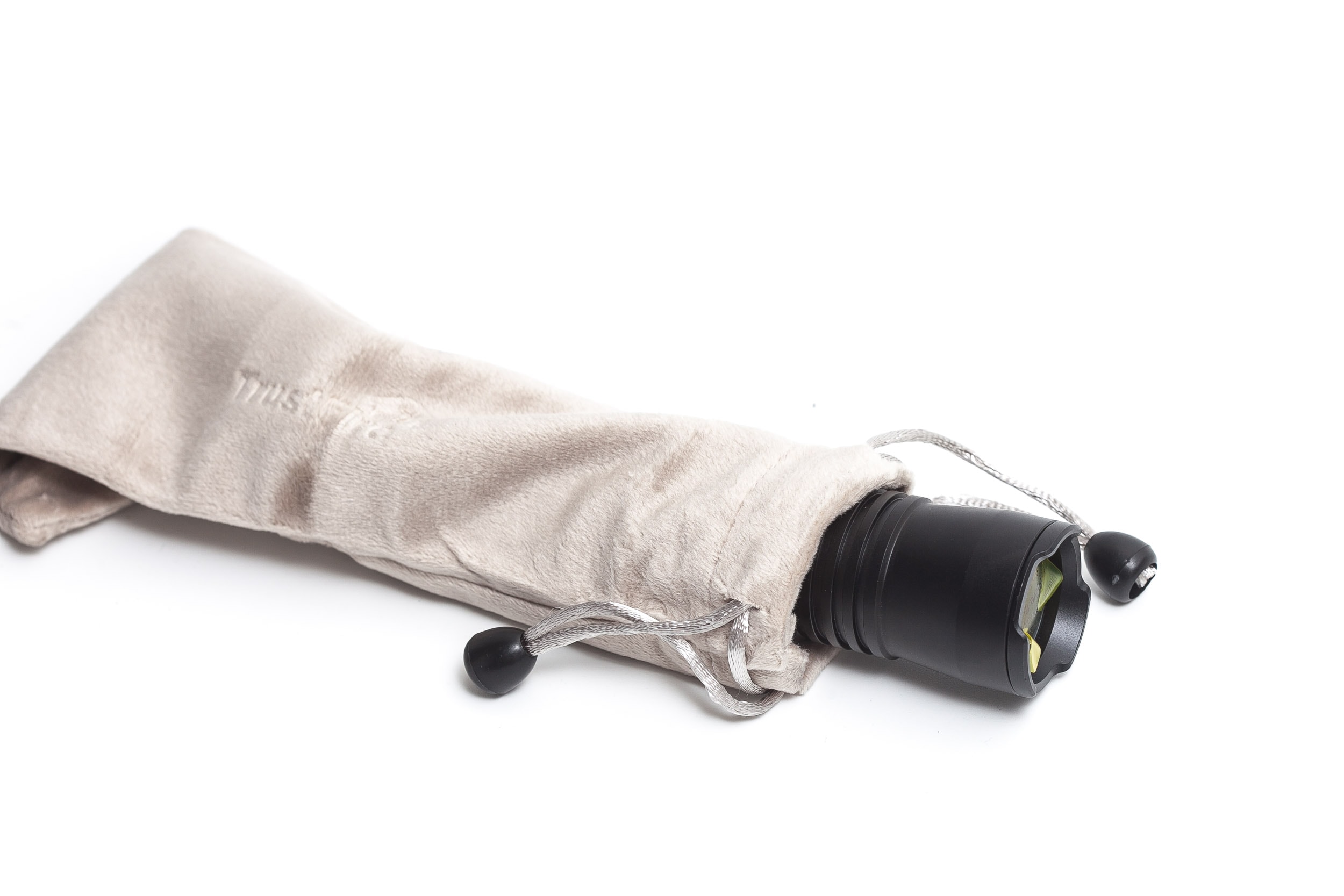
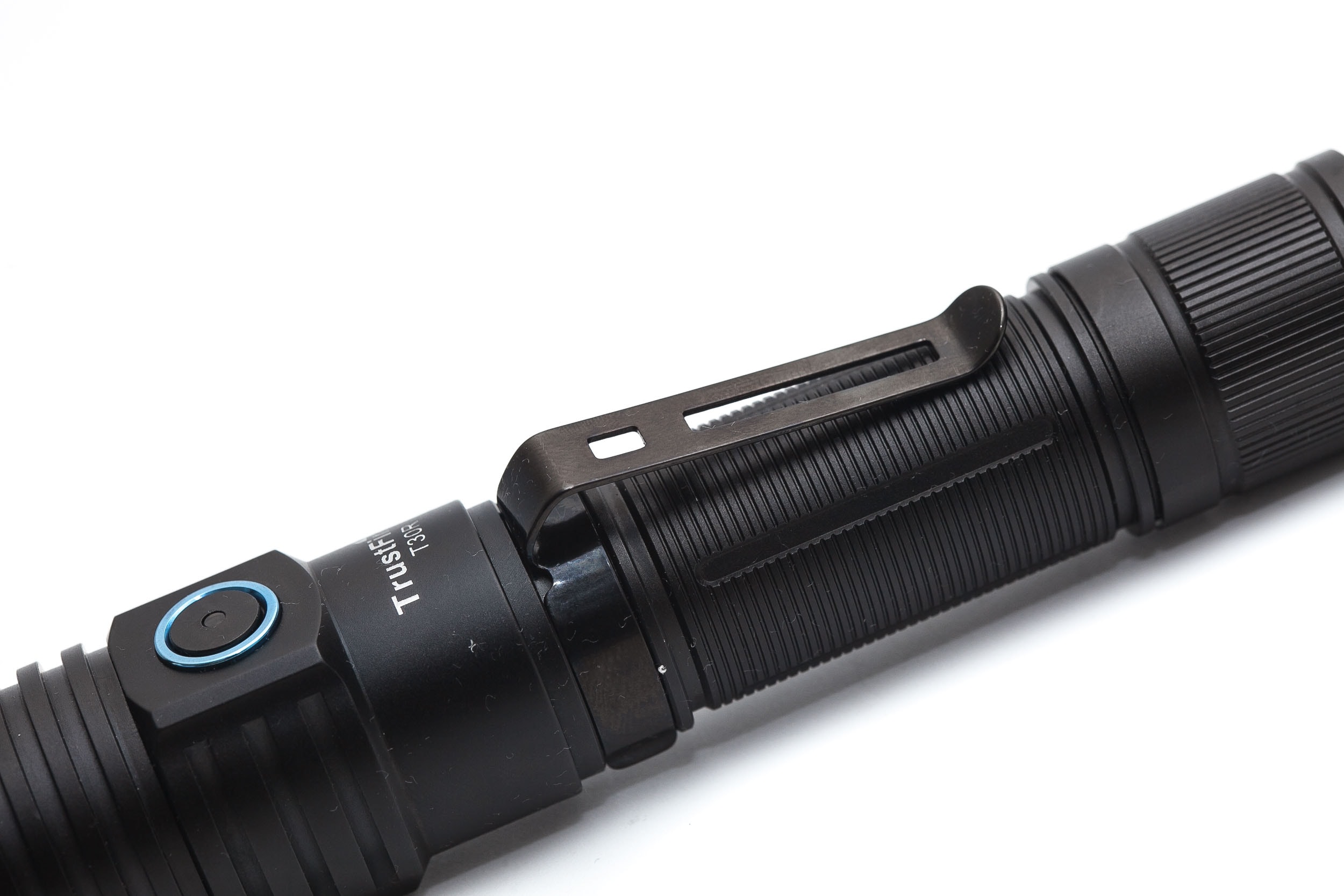
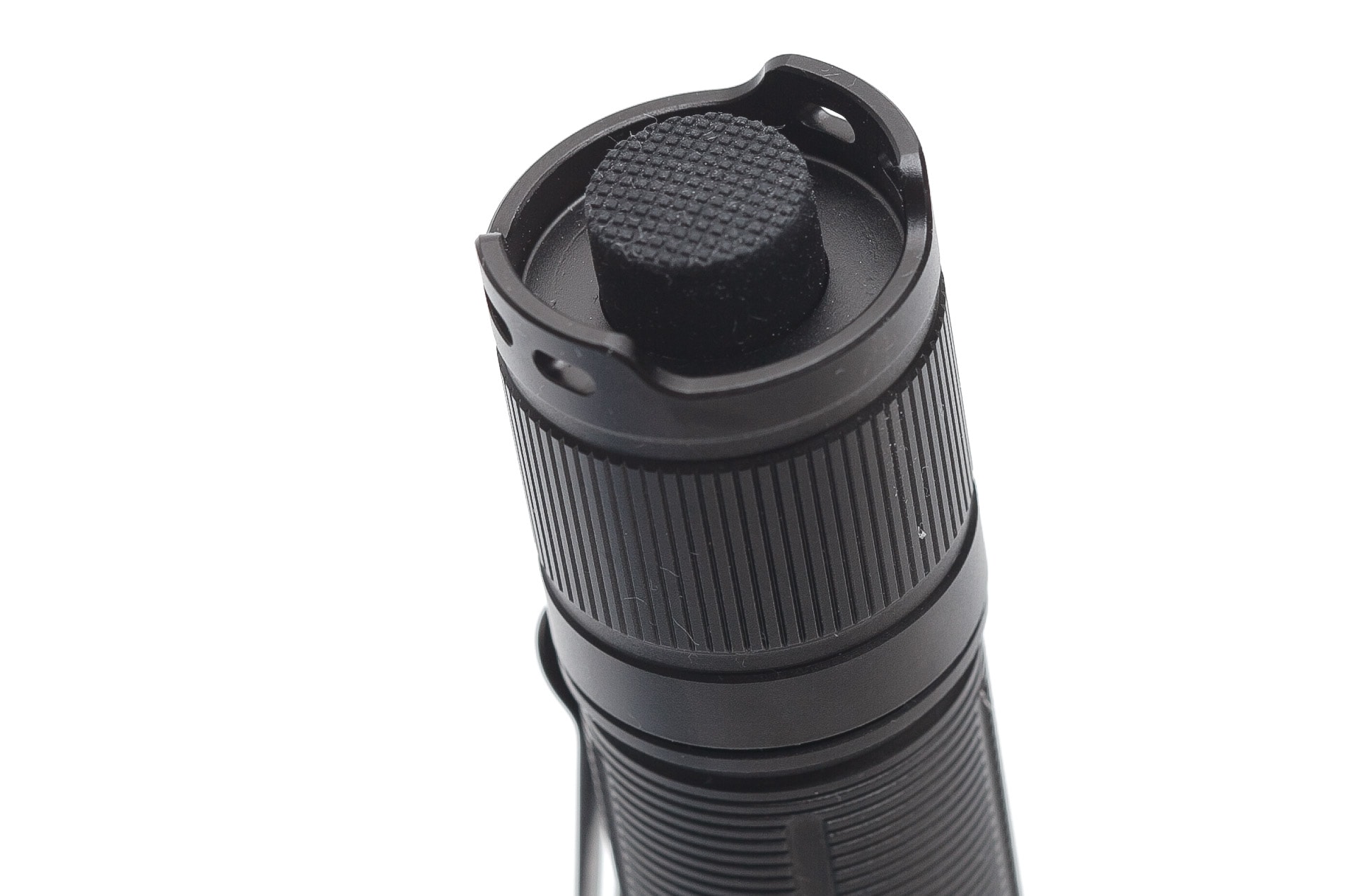

LEP, Lens, Bezel, Beam, and Reflector
If you are looking for a new LED flashlights.. please check out our other reviews, because this ain’t one.
The T30R is an LEP flashlight with a claimed beam distance of 1100 meters. That’s quite a bit farther than any LED flashlight can do with the same dimensions.
To reach that distance, the T30R uses a shine-through LEP module, sitting behind a convex lens without a protection glass lens. This is a pity, because getting a replacement convex lens will be more difficult than getting a cheap protection glass lens.
What’s more important is the beam quality or the lack thereof.
If we primarily focus on the beam quality, you might be a bit disappointed to hear that the beam itself is yellow/greenish. But keep in mind that you may not see this that much, until you compare it to a cool white beam.
The center has a clear hotspot, and a very small area of spill around it.
I measured low mode with my Sekonic C800 at about 5 meters and got the following results:
Spectral measurements:
I measured low mode with my Sekonic C800 at about 5 meters and got the following results:
| Mode: | CCT: | CRI Ra: | duv |
|---|---|---|---|
| Low | 5510K | 58.1 | 0.238 |
The duv of 0.0238 explains the greenish tint.

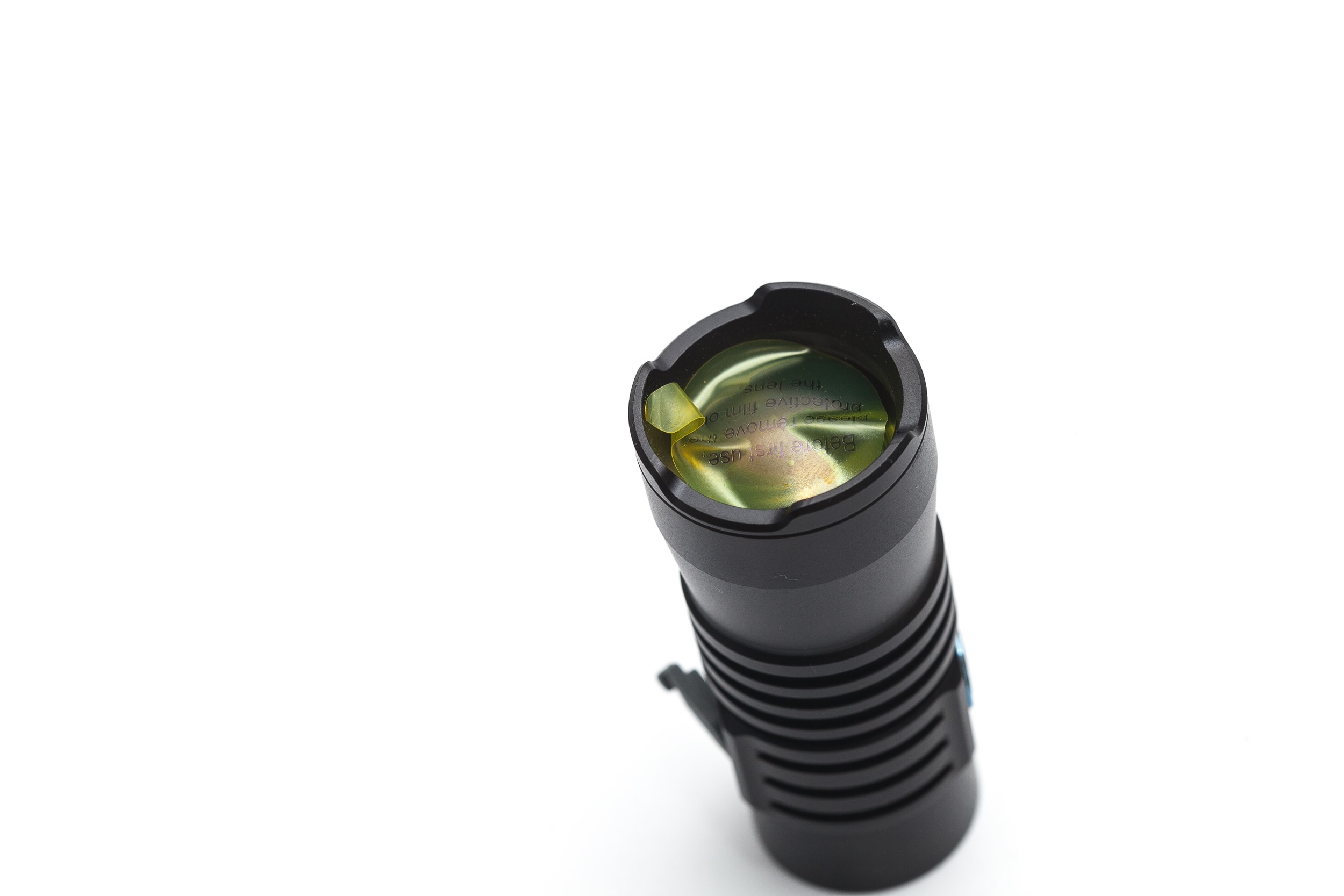
Dimensions and its competition
Dimensions:
| Trustfire T30R | Millimeters | Inches |
|---|---|---|
| Length | 160 mm | 6.3 in |
| Head diameter | 31 mm | 1.2 in |
| Body diameter | 23 mm | 0.9 in |
Dimensions are rounded to the nearest millimeter, and to the nearest tenth of an Inch.
Weight: measured with included 3,000mAh battery
| Trustfire T30R | Weight in grams | Weight in oz. |
|---|---|---|
| Without battery: | 119 g | 4.2 oz |
| With battery | 164 g | 5.8 oz |
Weight is rounded to the nearest gram, and to the nearest tenth of an Oz.
Trustfire T30R flashlight comparison
Size compared to other LEP flashlights
Group 1, from left to right: Lumintop Petal, Maratac DX Reach rev2, Mateminco FW3, Lumintop X0, FireFlyLite Lep02, Trustfire T30R, FireFlyLite Lep01, Nitecore P35i.

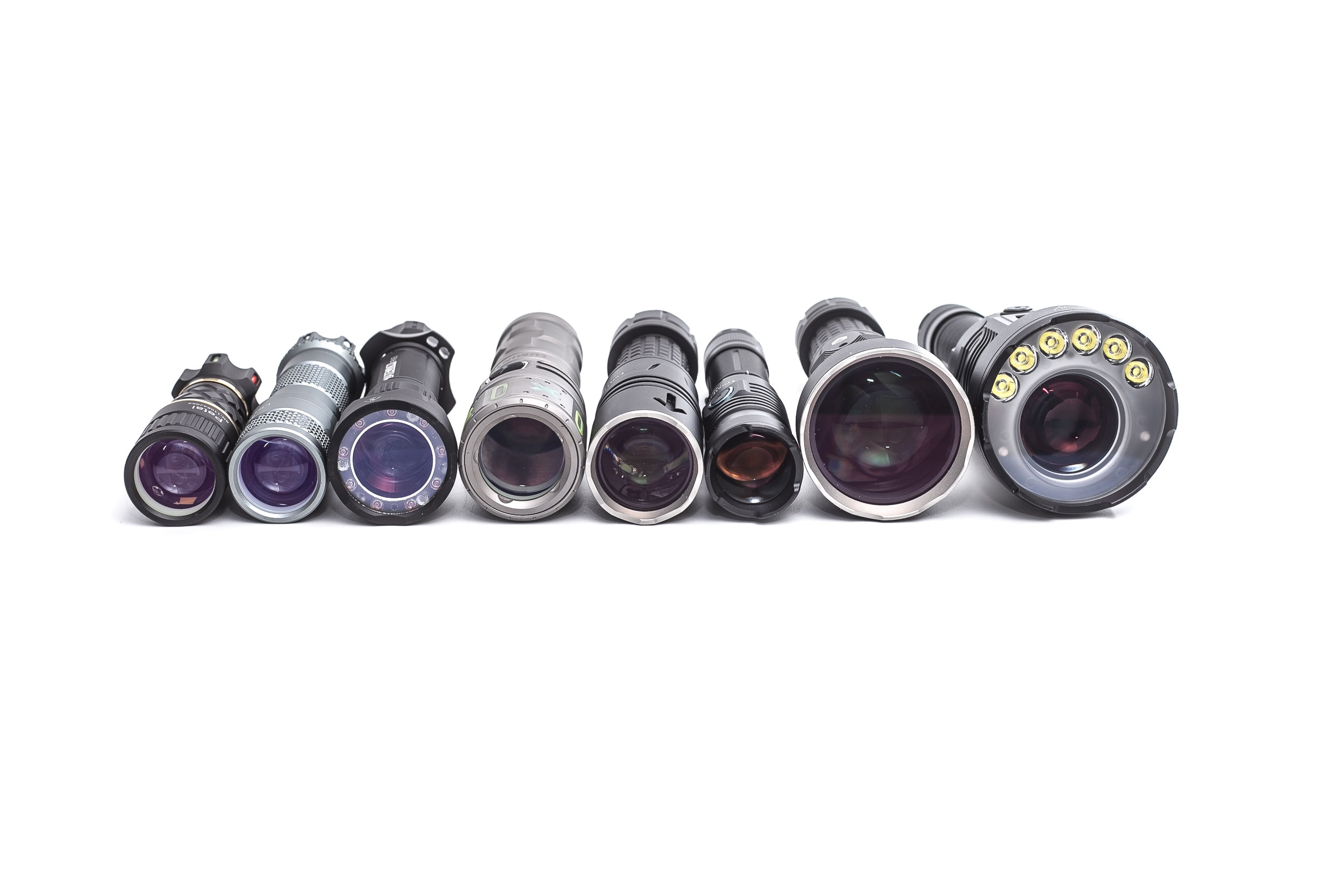
Trustfire T30R UI : User interface and driver
The T30R uses a pretty standard UI, that doesn’t have any learning curve. It’s that simple
The available main modes:
- Low, Medium, High
The available special modes (blinkies):
- Strobe
How the UI works when the flashlight is still turned OFF:
- Side switch: noting
- Rear switch half press: momentary on (it will use the last used output, and you can use it for morse coding)
- Rear switch full click: turns on (with mode memory)
How the UI works when the flashlight is turned ON:
- Rear switch click: turns off
- Side switch click: runs through modes from low to high
- Side switch 2+ clicks: just keep running through the modes
- Side switch long press: strobe
Shortcuts within the UI:
- There are no shortcuts
Mode memory:
- Yes, it memorizes the last used output
Blinky modes:
- Only strobe. Can be activated by long-pressing the side switch when the light is turned on with the rear switch.
Low battery warning:
- Not that I know off
Lock-out mode:
- Just use the rear switch for off
PWM:
- Not visible by eye
Firmware / UI Conclusion:
- The UI is very easy to understand with the rear switch for power, and the side switch for mode changing. Nothing can be easier.
Trustfire T30R Charging and batteries
| Charge type | Fits | No fit | Charge time |
|---|---|---|---|
| Flashlight with onboard USB-C | All 18650 sizes, including flat tops, button tops, protected | – | 2h 15min |
Now, let’s talk about charging and batteries.
The T30R includes an 18650 battery with a claimed capacity of 3,000mAh. I measured 4.08V at arrival, which is a bit high. Normally, batteries are shipped at around 3.6-3.7V. The cell is about 70mm long, and has a button top, and protection board. This is one of the longer 18650 batteries out there.
Since both sides of the flashlight have a spring (driver, and tailcap), it also accepts non-protected, flat top 18650 batteries as well.
The manual also notes that it accepts 2*CR123 batteries, but forbids using 2*16340 batteries.
The T30R has a built-in charging mechanism with USB-C, that charges the included battery from empty to full in 2 hours and 15 minutes according to my testing. And the maximum charge current I saw was 1.9A, or 10 watts. But the end Voltage after charging was only 4.12V-4.13V, which is very much on the safe side. And the battery Voltage after discharging was between 3V.
Trustfire includes a USB-A to USB-C charging cable, but it also works with a USB-C to USB-C cable. And while charging there is a red LED indicator visible in the switch.
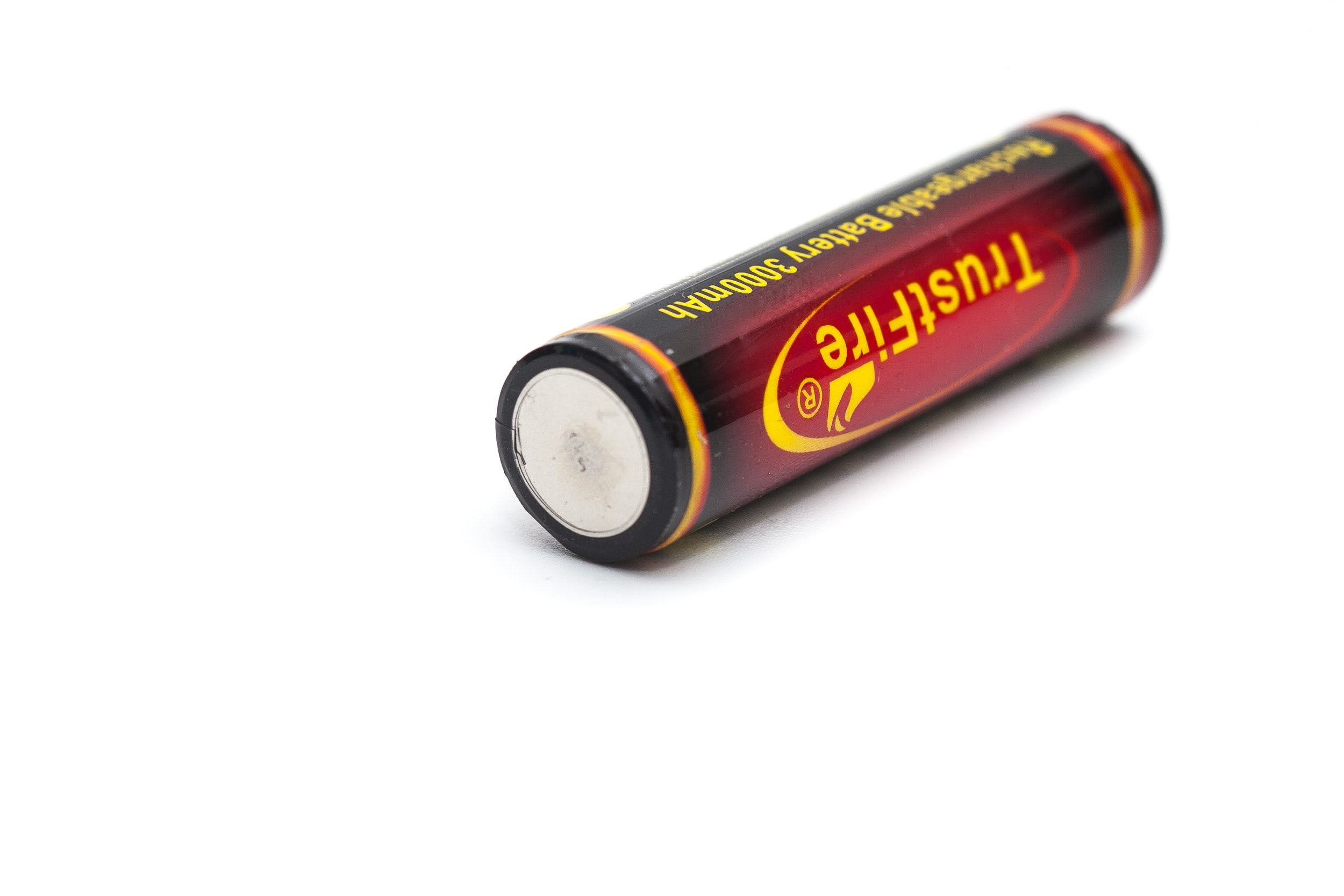
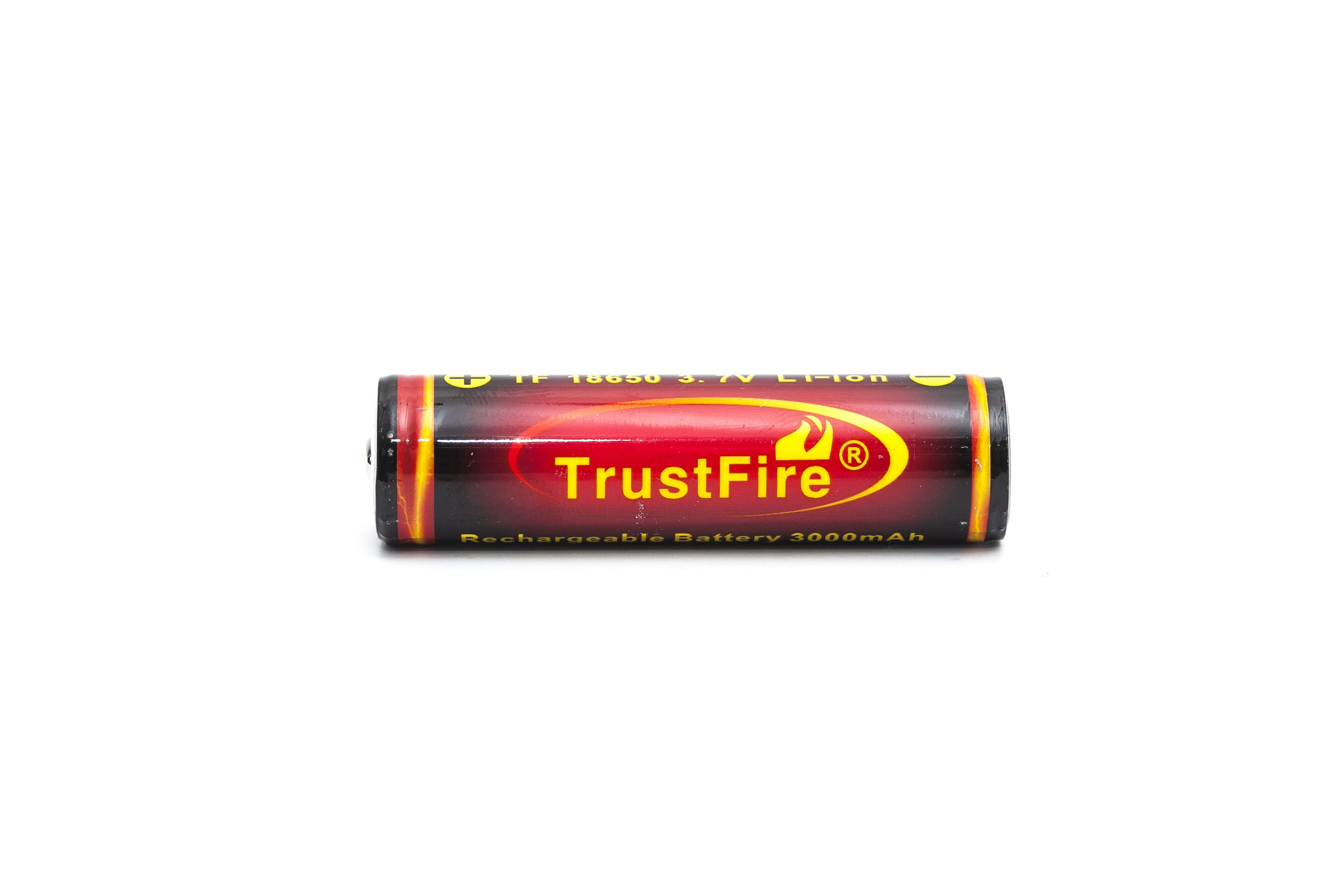
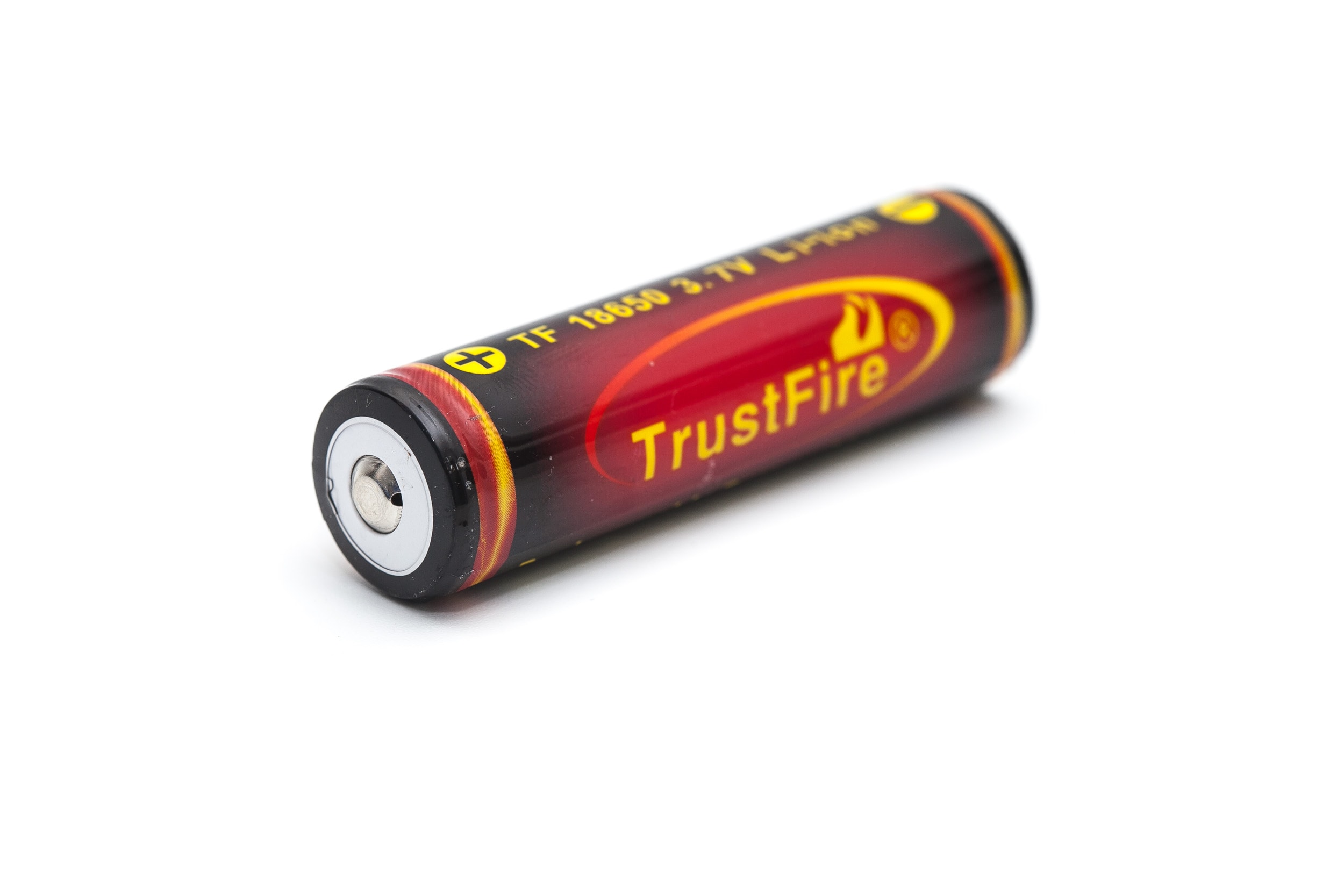
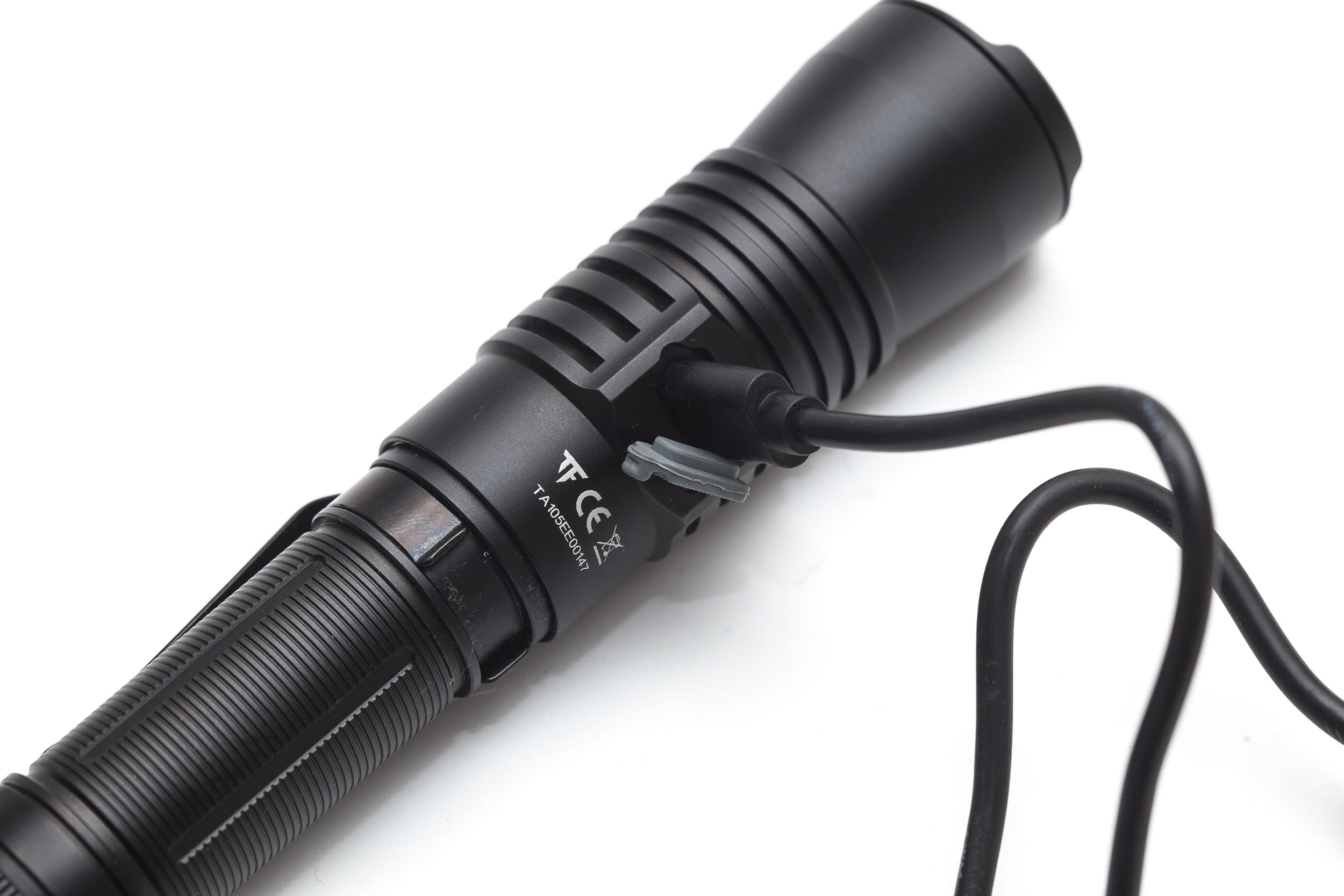
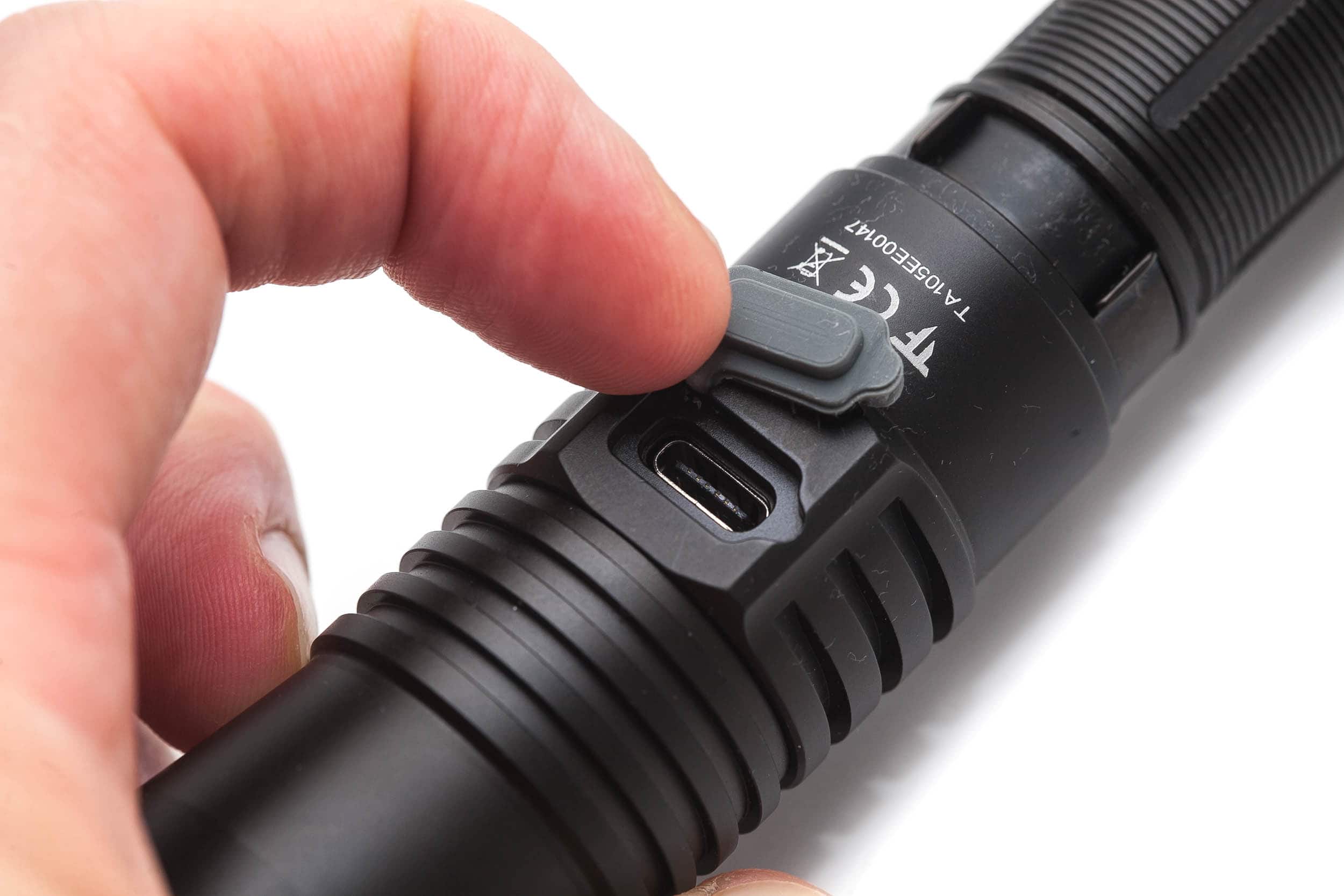
Performance test
This is the gear I use for testing:
| Gear | Purpose | Link to buy |
|---|---|---|
| Hagner E4-X | Measuring beam intensity (throw) | Inquire at Hagner.se |
| 2* Extech SDL400 | Lumens and logging runtimes | Amazon.com, Amazon.co.uk, |
| Leica Disto D2 | Distance for throw measurements | Amazon.com, Amazon.co.uk, |
| Sekonic C-800 | Spectrometer for LED measurements | Amazon.com, Amazon.co.uk |
| Uni-T UTi260B | Thermal Image camera | Amazon.com, |
Lumen measurements:
How Lumens are Measured: Understanding ANSI FL1 Standards How Lumens are Measured: Understanding ANSI FL1 Standards: The ANSI FL1 standards specify that output in lumens should be measured 30 seconds after turning on, as this is the standardized time for measuring brightness according to the industry standard. This is why we focus on this part in our measurements. The ANSI FL1 standards require an ambient temperature of 22 ± 3°C. We record the ambient the ambient temperature to identify potential reasons for any observed discrepancies.The output measurements in this review are based on my homemade integrating spheres, each equipped with an Extech SDL400 Lux Meter. For consistency and accuracy, a calibration light (Convoy S2+ with 249lm and a Convoy S2+ with 261lm) is measured prior to each set of lumen measurements.
For high-output lights, one of the lux meters uses an ND camera filter to prevent the lux meter to max out. This is either the Kenko PRO1D ND16 up till about 80,000 lumens or Gobe ND32 for anything above.
All of my readings were taken from a fully-charged Trustfire 18650 with 3,000mAh.
The measurements were taken manually at turn on and 30 seconds. The 10 minute numbers are taken from the runtime graph.
| Mode | Specified | at turn on | 30sec. | 10min. |
|---|---|---|---|---|
| Moonlight | 8 lm | 28 lm | 25 lm | – |
| Med | 95 lm | 109 lm | 106 lm | 99 lm |
| High | 460 lm | 316 lm | 105 lm | 97 lm |
It’s strange that Trustfire named the lowest output Moonlight.
And High mode behaves pretty strangely, which can be seen in the runtime graph below. It starts out high, drops, increases, and drops again.
Parasitic drain:
- There is no parasitic drain, because it uses a mechanical tail switch.
Trustfire T30R battery life and runtime graphs
How Runtimes are Measured: Understanding ANSI FL1 Standards About ANSI FL1 runtime standards: The runtime is measured until the light drops to 10% of its initial output (30 seconds after turning on). This does not mean that the flashlight is not usable anymore. The last column shows how long the light actually works till it shuts off. If there is a + symbol, it means that the test was stopped at that particular point, but the light was actually still running. This happens on certain occasions, with certain drivers, firmware, or batteries.Runtime tests were conducted in my 50cm home made integrating sphere, paired with the Extech SDL400 data logging Lux Meter.
| Mode | Specified runtime | Measured runtime (ANSI FL1) | Time till shut off |
|---|---|---|---|
| Moon | 58h | – | – |
| Med | 6h 30min | 3h 26min | 3h 26min |
| High | 3h 30min | 3h 29min | 3h 29min |
I did 2 runtime tests for Medium mode, since my first test was showing a shorter runtime that High.. However, the second Med test was even 2 minutes shorter. So I kept the longer runtime. And I had charged the battery inside my SkyRC MC3000 charger, just to make sure the battery was fully charged.

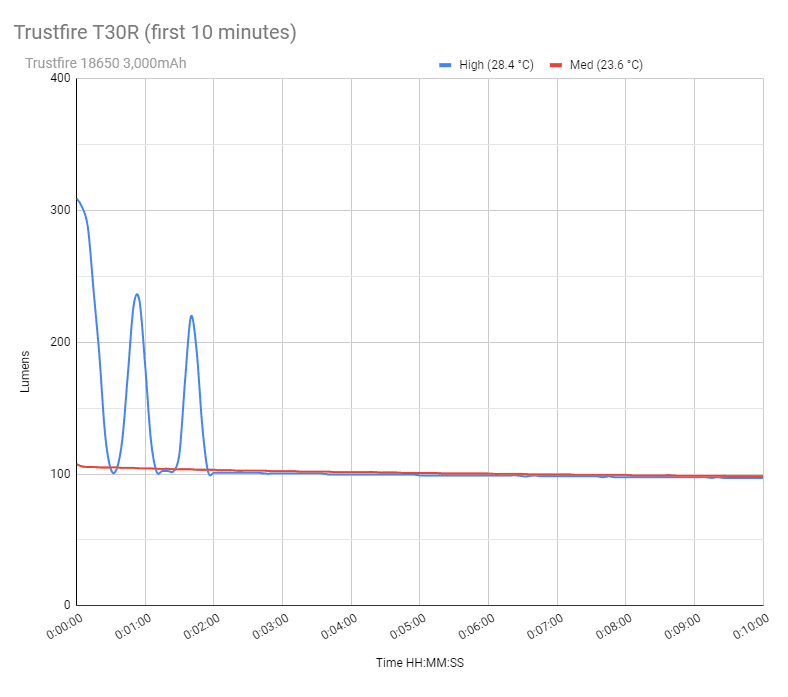
Trustfire T30R peak beam intensity and beam distance measurements
About Peak beam intensity: Understanding ANSI FL1 Standards About peak beam intensity The calculated value of distance in meters at which the flashlight produces a light intensity of 0.25 lux. (0.25 lux is about the brightness of a full moon shining on an object). This means that the intensity has decreased so much, it becomes difficult to see darker objects, or objects that don’t reflect light. The columns ‘Meters’ and ‘Yards’ use rounded numbers.Measurements were taken indoors with a Hagner E4-X Lux Meter at 5 meters, and outdoors at 20 meters. The problem is however, that the output drops very quickly so it’s hard to get the measurement exactly at 30sec.
| Mode | Specified | Candelas | Meters | Yards |
|---|---|---|---|---|
| Low | – | 39,250 cd | 396 m | 433 yd |
| Med | 54,756 cd | 149,750 cd | 774 m | 846 yd |
| High | 302,500 cd | 147,500 cd | 768 m | 840 yd |
| High (turn on) | – | 400,000 cd | 1,265 m | 1,383 yd |
At turn on, the measurements were quite a bit higher than specs, but that’s not according the ANSI FL1 standards. See the runtime graphs on its actual performance.
I also compared it to other small LEP flashlights. And you can see the comparison below. The dotted line is the TrustFire T30R.

LEP flashlight comparison: small LEP flashlights (< 40mm)
A comparison list with single-cell LEP flashlights we reviewed: These numbers are NOT from the specifications but measured by our reviewers. They include all single-cell LEP flashlights with a smaller diameter head (smaller than 45mm). The numbers include the measurement in lumens (lm), measure candela (cd), and calculated distance in meters, and yards. These numbers are all measured 30 seconds after turning on.
| Flashlight | @30sec (lm) | Candela (cd) | Meters | Yards |
|---|---|---|---|---|
| Acebeam W10 gen2 | 474 | 496,000 | 1409 | 1540 |
| Fenix TK30 | 493 | 384,000 | 1239 | 1355 |
| Fenix HT30R | 474 | 700,000 | 1673 | 1830 |
| Jetbeam M2S WP-RX | 354 | 345,000 | 1175 | 1285 |
| Jetbeam RRT M2S Raptor | 365 | 248,000 | 996 | 1089 |
| Lumintop Thor 1 | 323 | 356,000 | 1193 | 1305 |
| Lumintop Thor 2 | 324 | 888,000 | 1888 | 2065 |
| Lumintop Thor 2 v2 | 297 | 752,000 | 1734 | 1897 |
| Maratac LEP DX Reach rev. 2 | 291 | 396,000 | 1259 | 1376 |
| Nextorch L10 Max | 421 | 440,000 | 1327 | 1451 |
| Nextorch T7L | 524 | 428,000 | 1308 | 1430 |
| Nextorch T10L | 468 | 484,000 | 1391 | 1522 |
| Olight Odin Turbo | 379 | 368,000 | 1213 | 1327 |
| Richfire SFC-039 | 194 | 197,896 | 890 | 973 |
| TrustFire T30R | 105 | 147,500 | 768 | 840 |
| Weltool W3 Pro | 478 | 363,000 | 1206 | 1319 |
| Weltool W3 PRO TAC | 1017 | 583,600 | 1528 | 1671 |
Interactive runtime graphs below
Below are interactive throw comparison graphs (candela), between single-cell LEP flashlights with a small head (+-<40mm). Hover your mouse over the interactive graph below to see the details of each specific light.
(tip: hold your mobile phone horizontally to see the full graph). Or check this link to view the full interactive graph.
Same, but then focused on the first 30 minutes. Or open new window for 30min interactive graph here.
And now zoomed in to see the details. Or open the following link for the interactive graph.
Beamshots
For the following beamshots, I used a Canon EOS 5D mk2 with a 100mm lens. Manual settings: ISO1600, 0.5sec, F4, 5000K
The second tower is about 450 meters / 492 yards away.
Beamshot images are mainly for comparing beam patterns, not for determining overall brightness or performance. For comprehensive performance metrics, I refer you to the performance section in this review.
Compare the beamshots of the following flashlights:
- TrustFire T30R
- Fenix HT30R
- NEXTORCH T7L
- Lumintop Petal
- Maratac LEP DX Reach rev2
- Amutorch BT35
- Natfire SF2

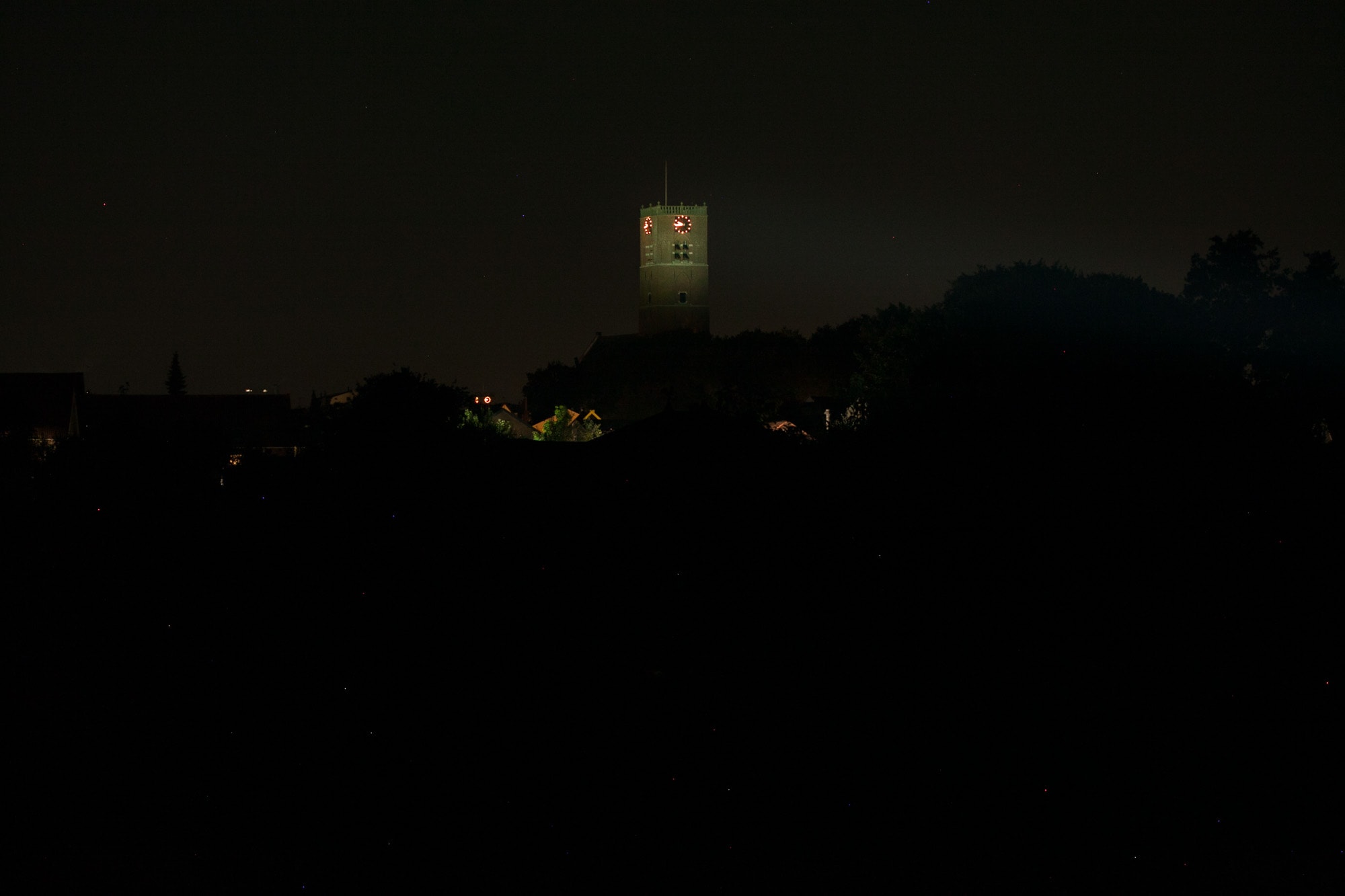
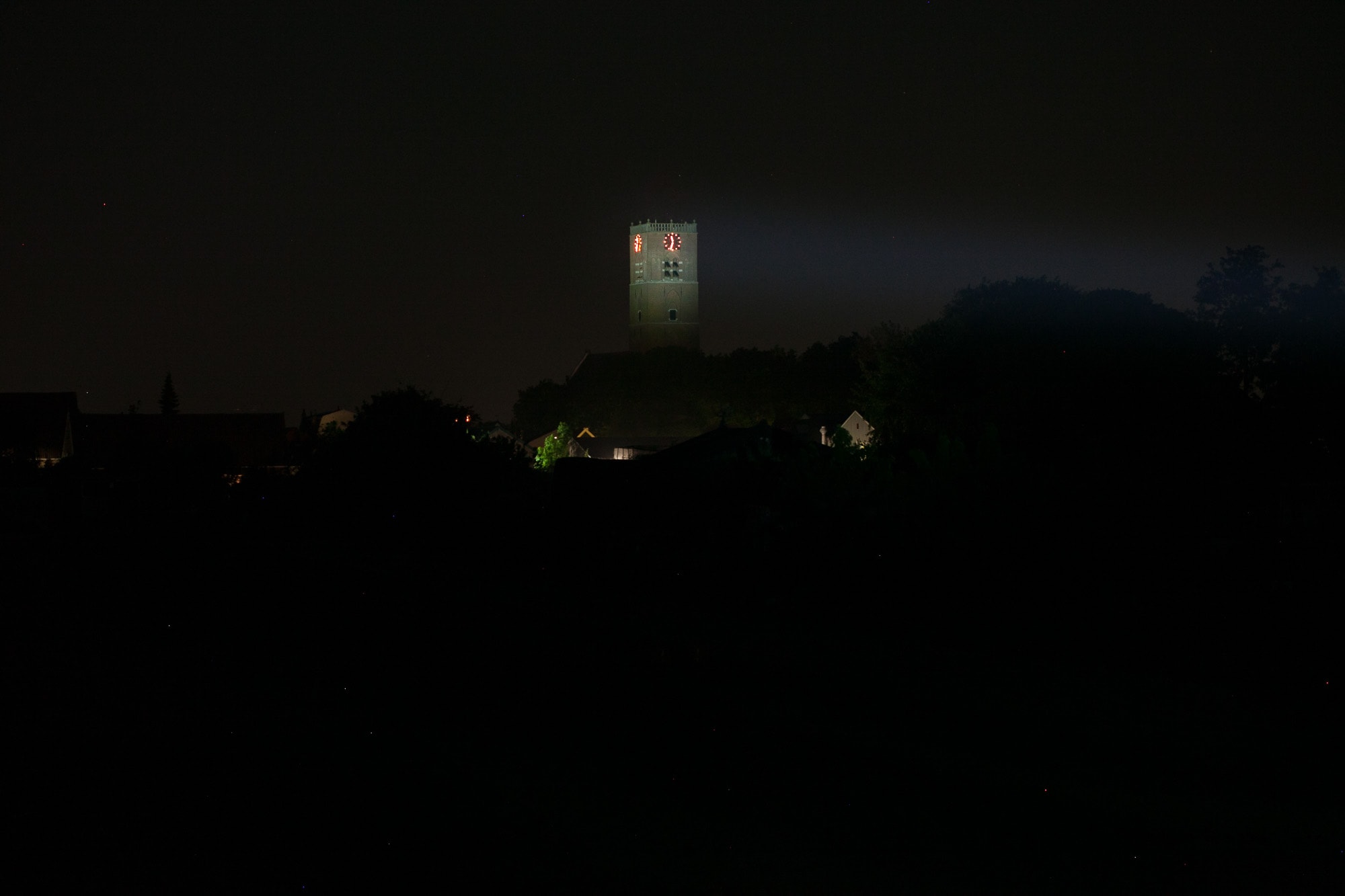
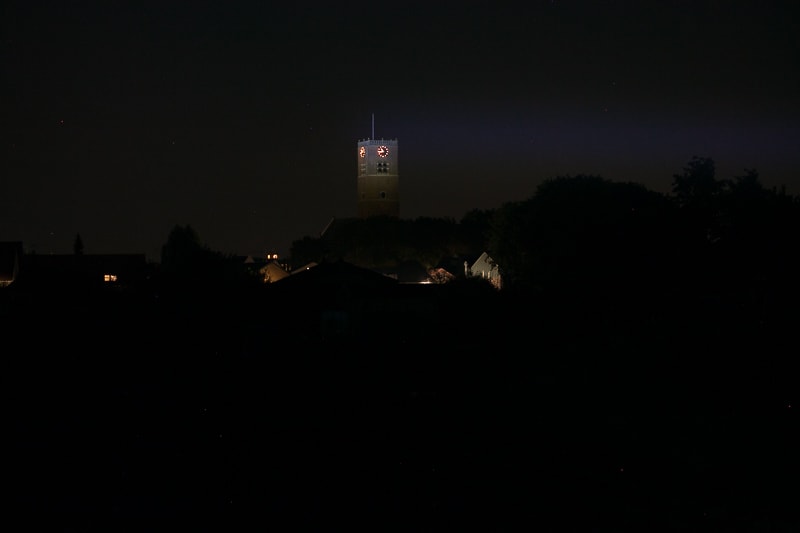
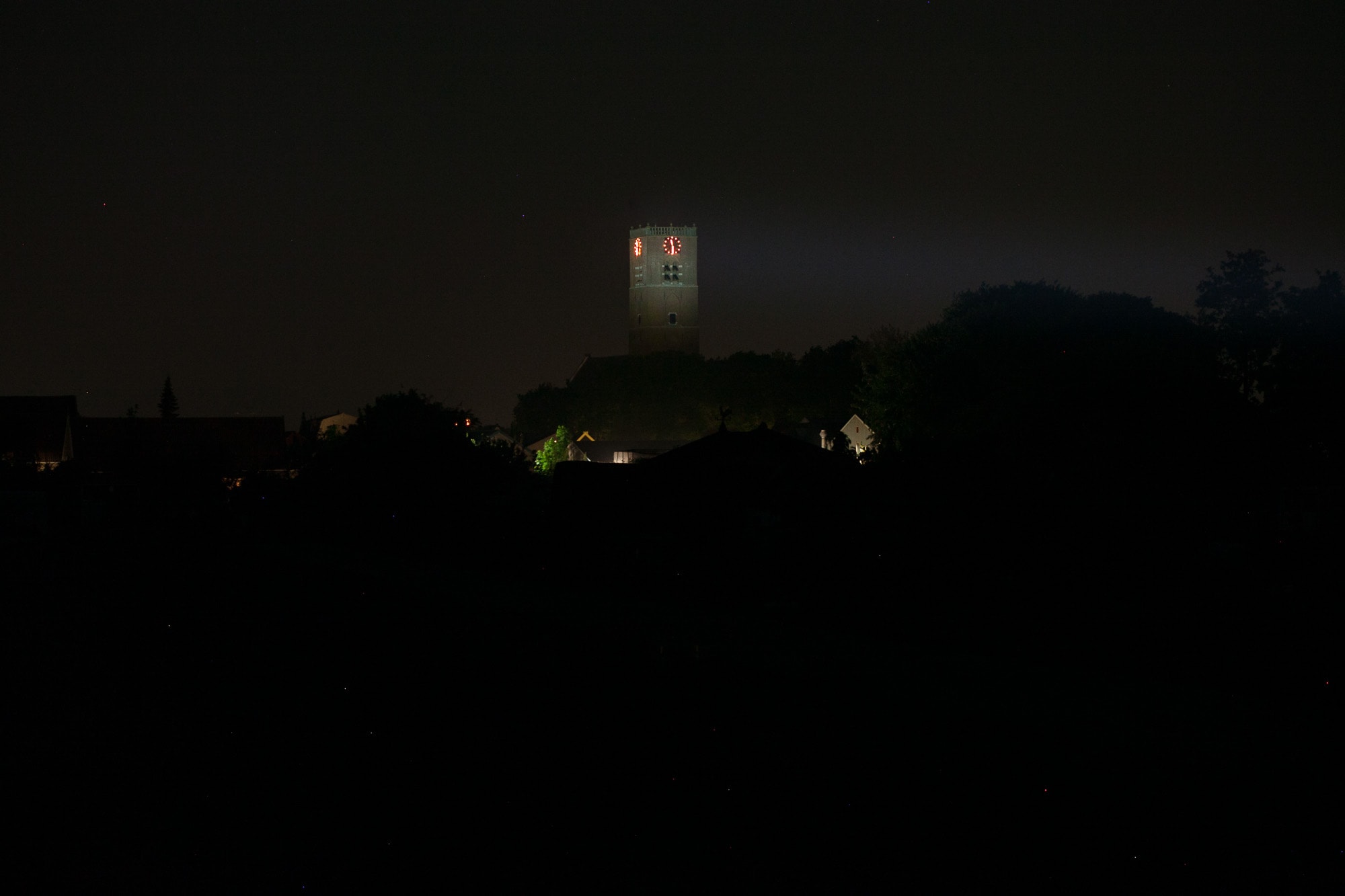
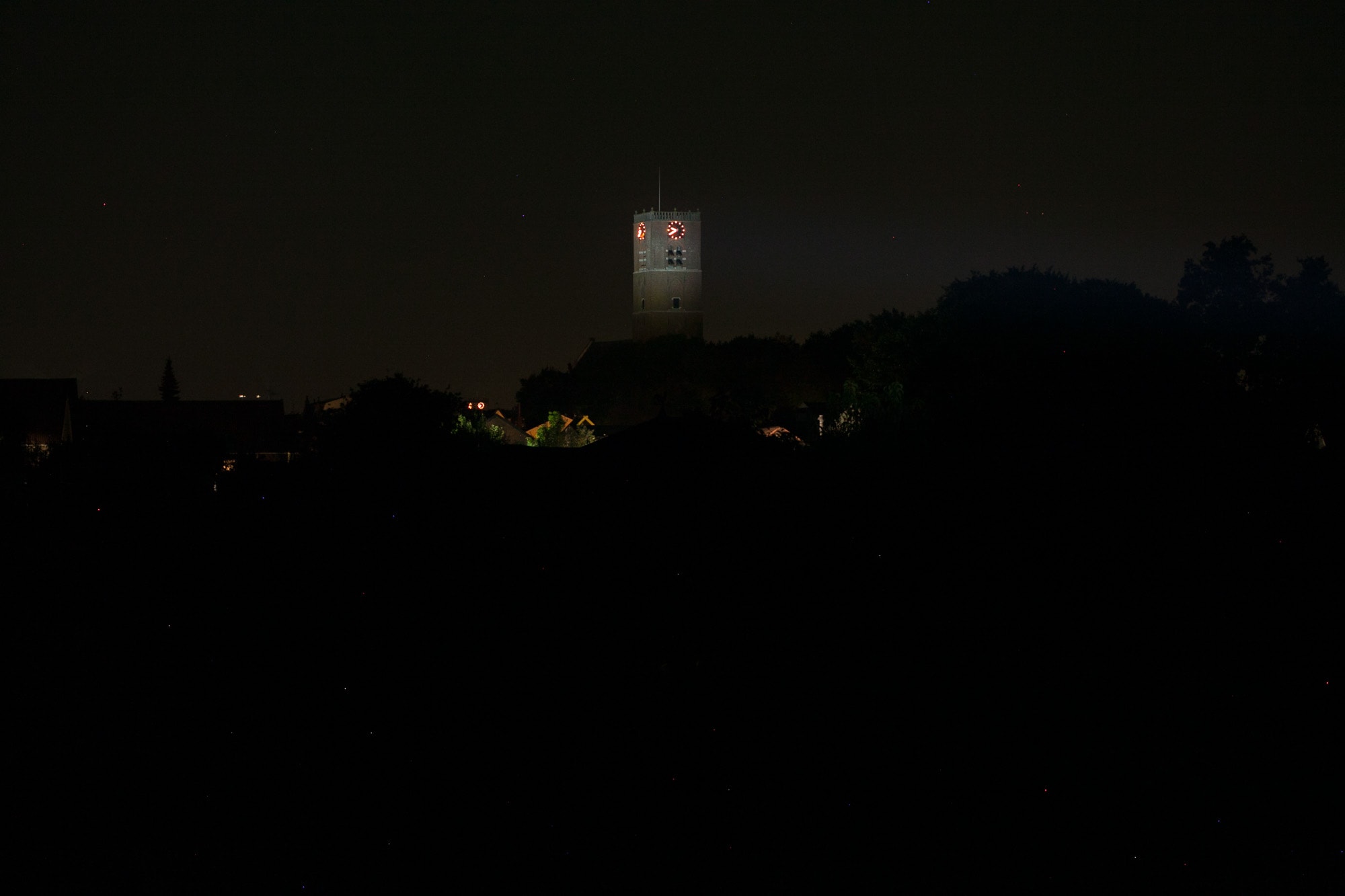
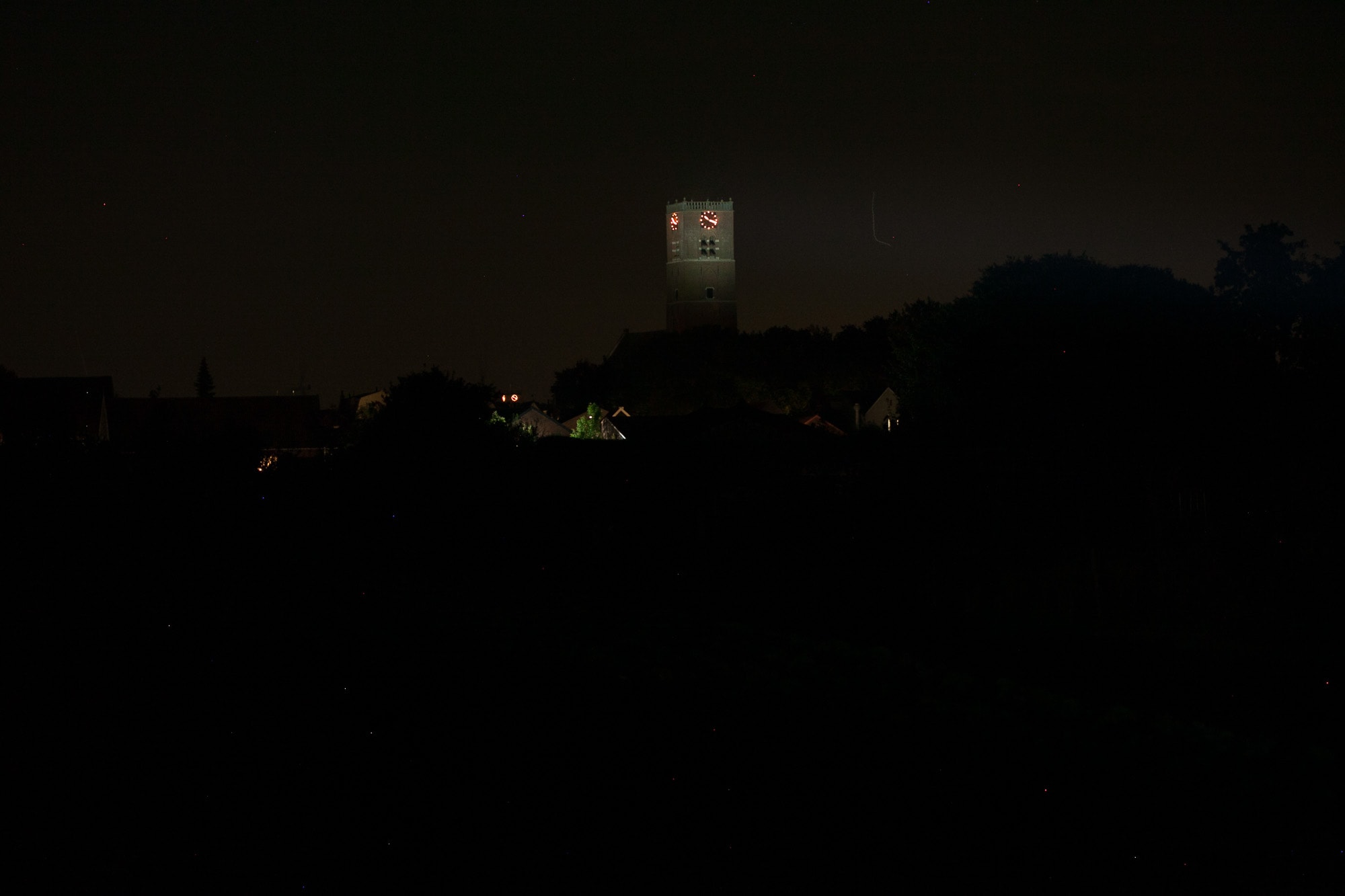
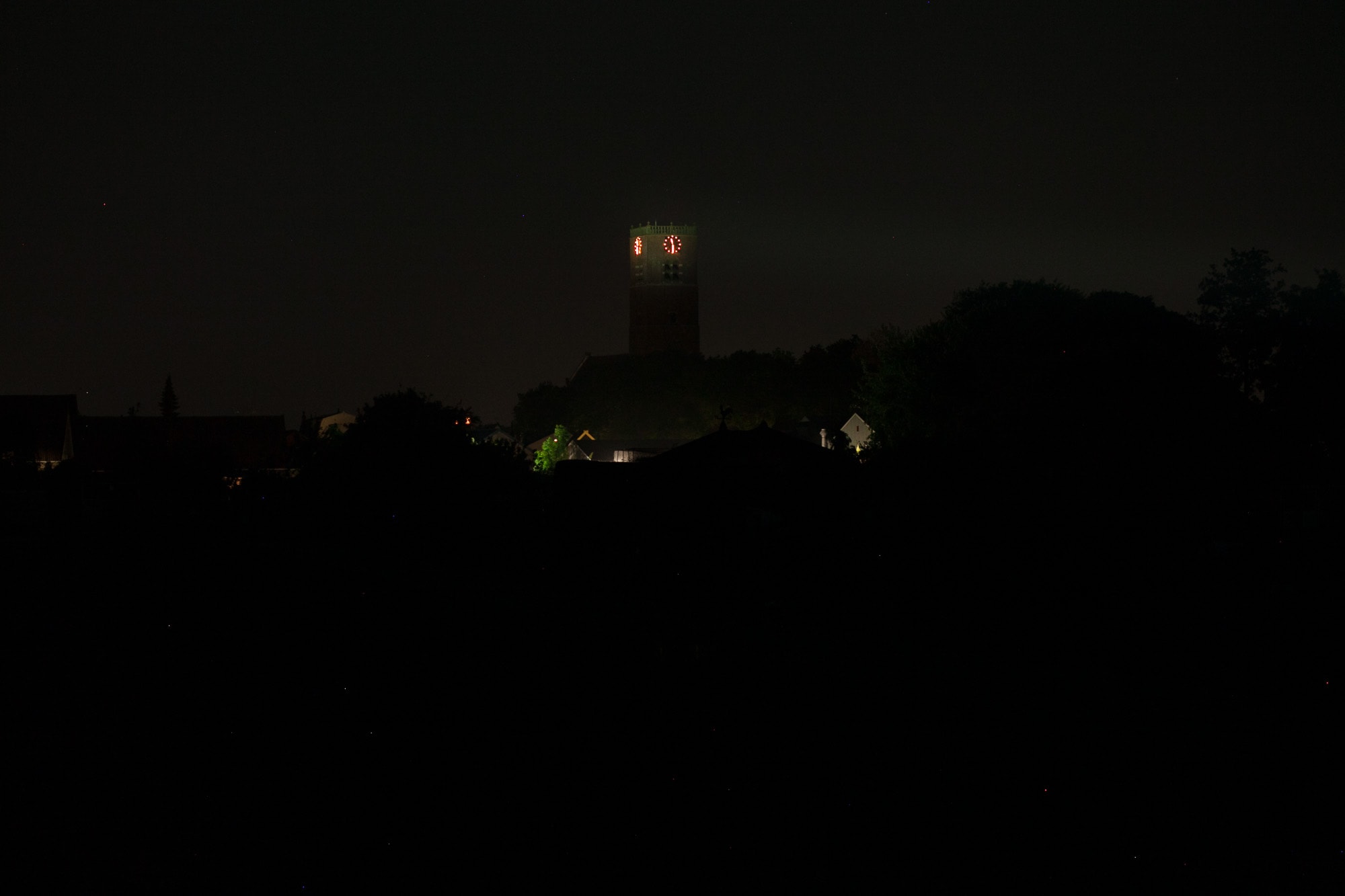
Disclaimer: we bought this flashlight with our own money. Nobody paid us to review this flashlight, nor have we been holding back on problems or defects.
Final Verdict
Pros
- Nice build quality
- Great number of accessories are provided, including a 3,000mAh battery
- Can reach 400,000 cd for a brief moment
- No PWM
Cons
- High output fluctuates strangely at turn on
- No glass protecting the convex lens
- Medium runtime is shorter than High
Explanation on star ratings:
1: Avoid: my phone flashlight would be a better choice – 2: Poor: significant defect or issues; almost unusable – 3: Average: some defects or issues; but still usable 4: Good: recommended (minor issues) – 5: Great: highly recommended

4.0 stars: ★★★★
While our star rating provides a reliable indicator, we encourage you to read the full review to make an informed decision based on your own needs and preferences.
For the price I paid, it’s probably worth it. And if you can get it below $100 go for it, but it’s not really worth anything higher. Especially not when looking at its runtime graphs, and overall performance.
You basically get a 150,000 flashlight, which is not bad, but not as good as its competitors.
I do love the simple, and easy to use UI, with a rear switch for power, and side switch for mode switching. Easy peasy.
If you just want a cheap LEP flashlight, with nice build quality, and a nice number of accessories, and you don’t care about maximum performance, this could be a nice one to get below $100. And that’s only when it’s on sale.
Buy your Trustfire T30R here:
1lumen selects and reviews products personally. We may earn affiliate commissions through our links, which help support our testing.